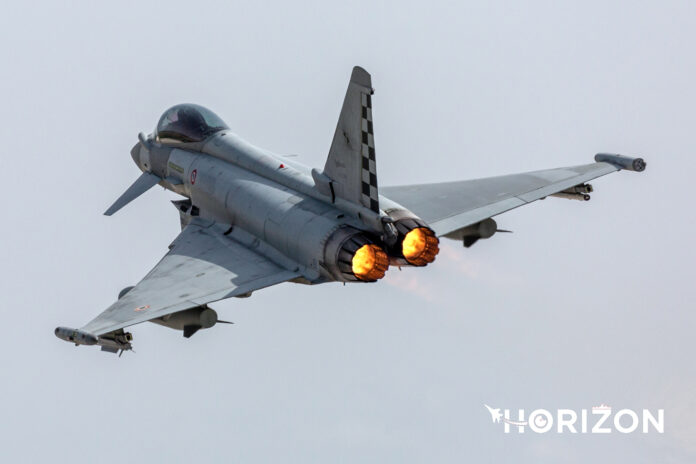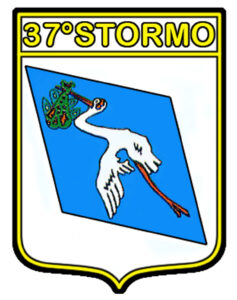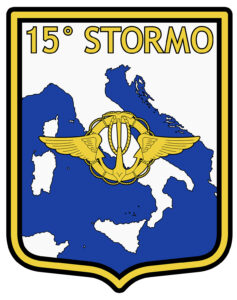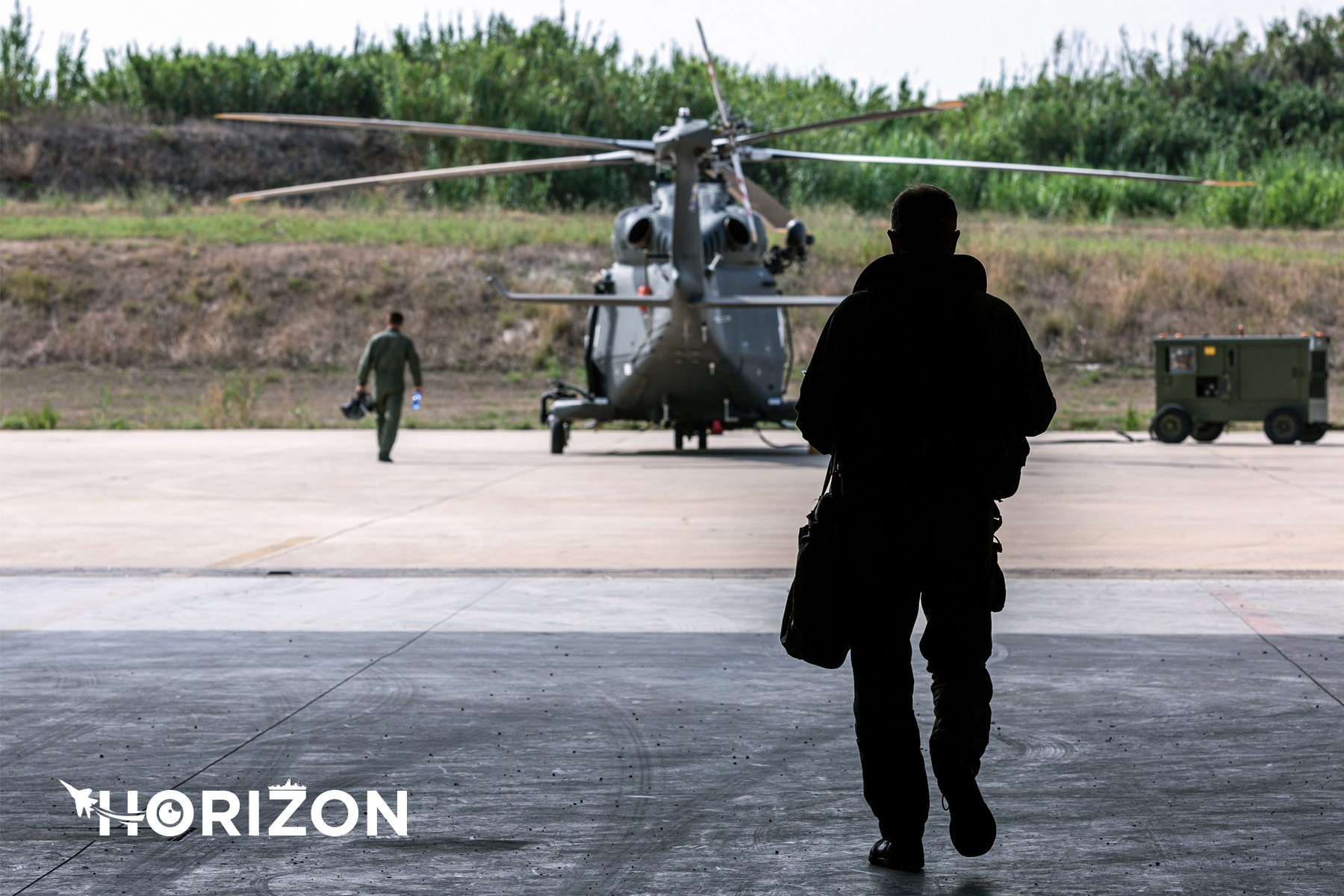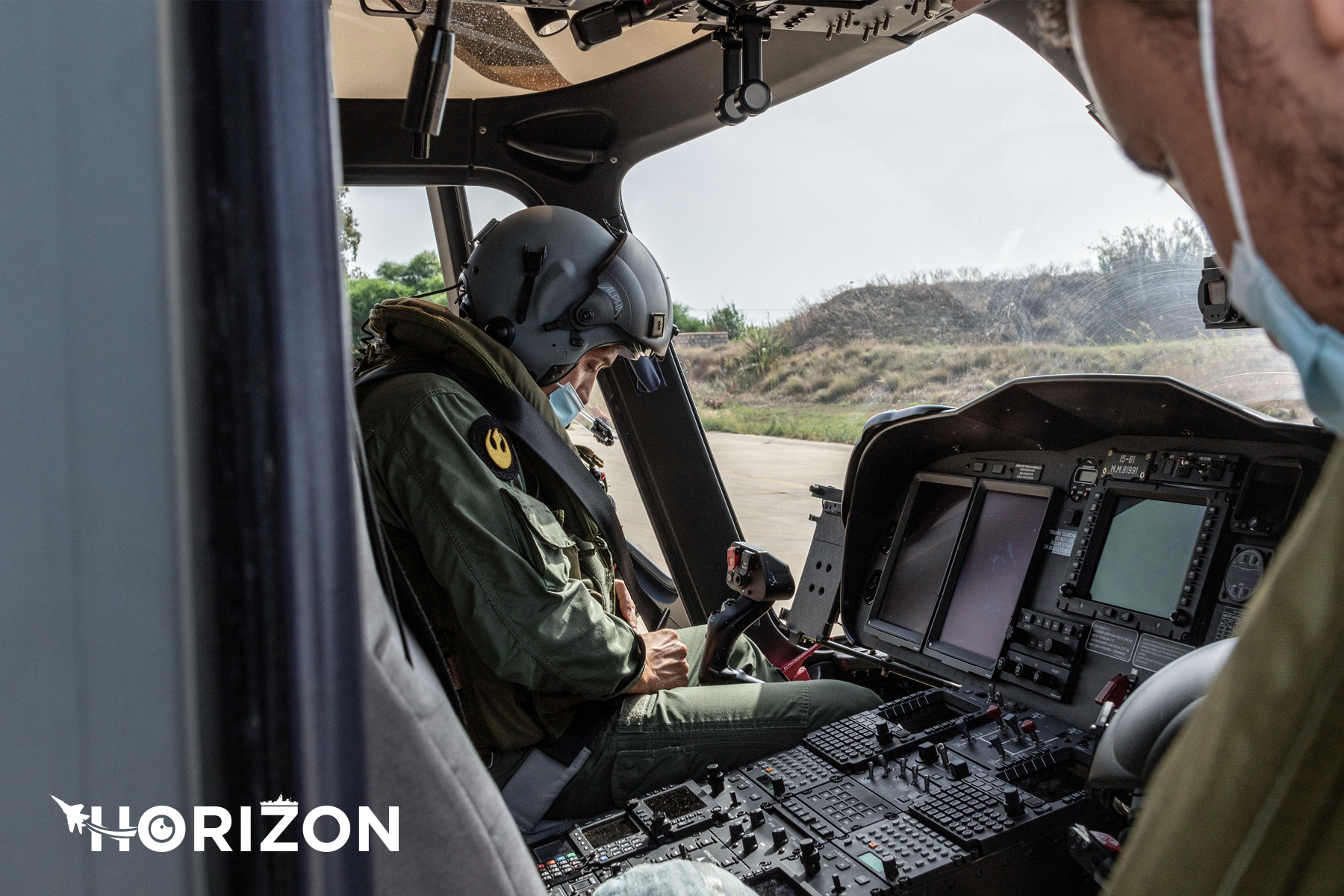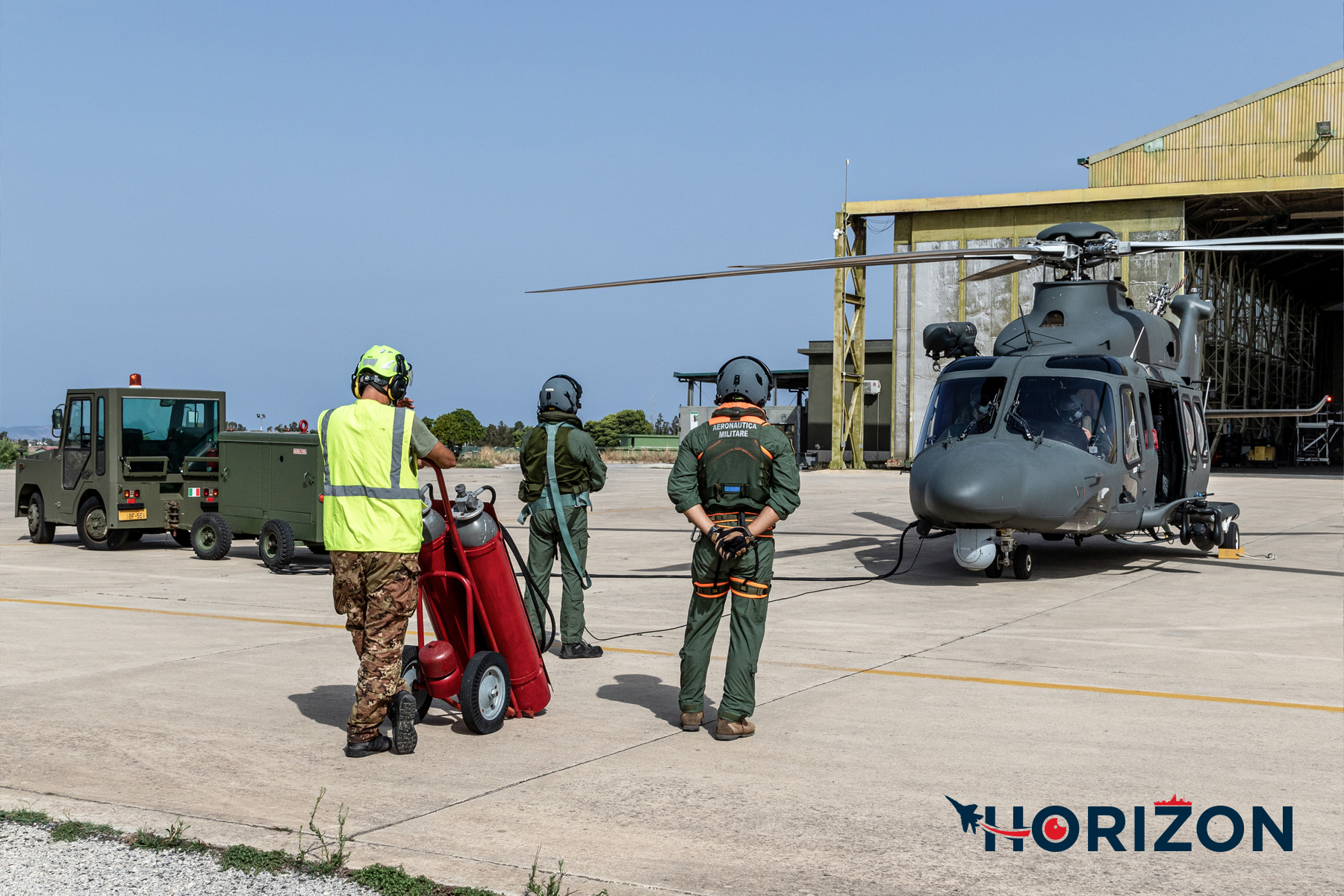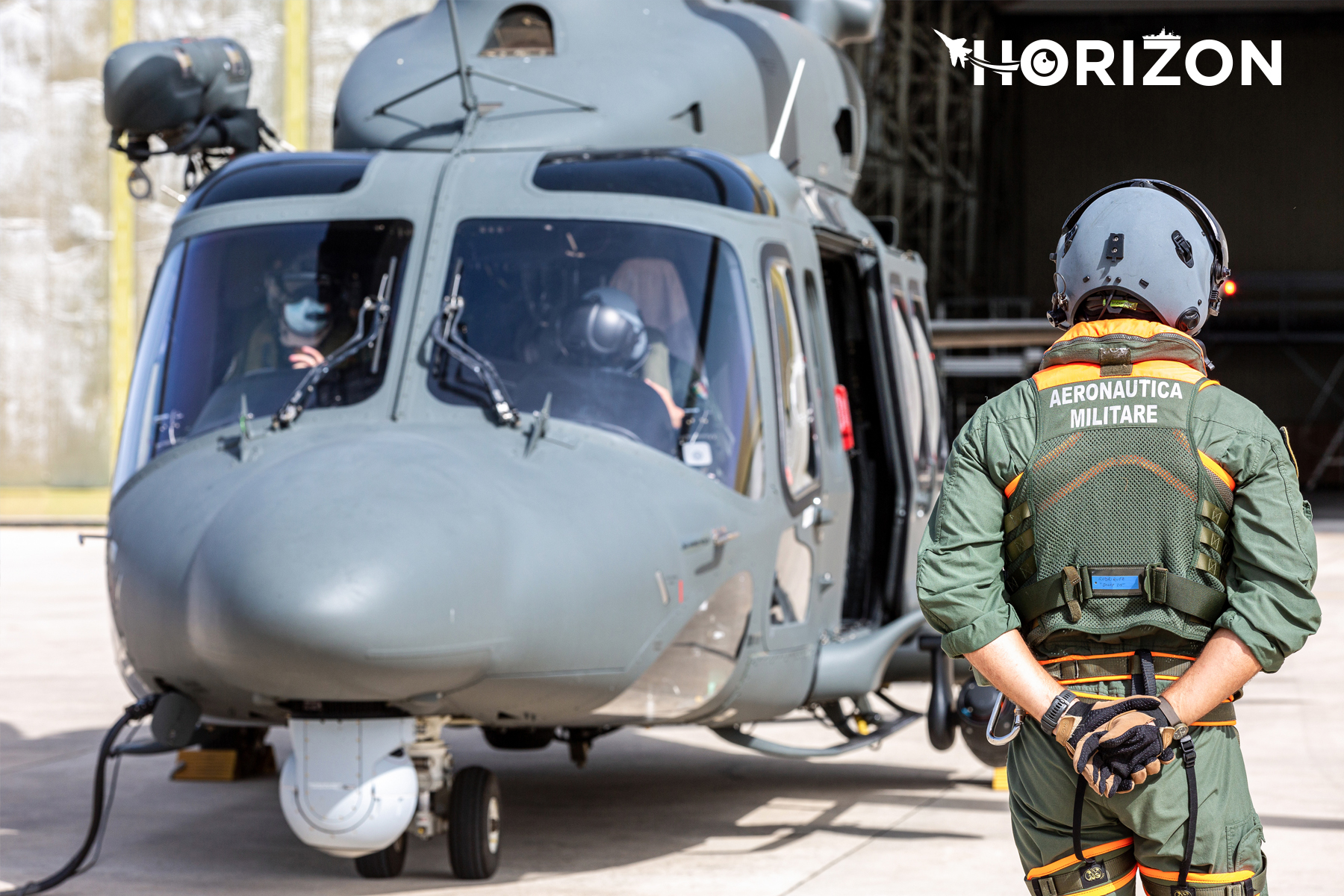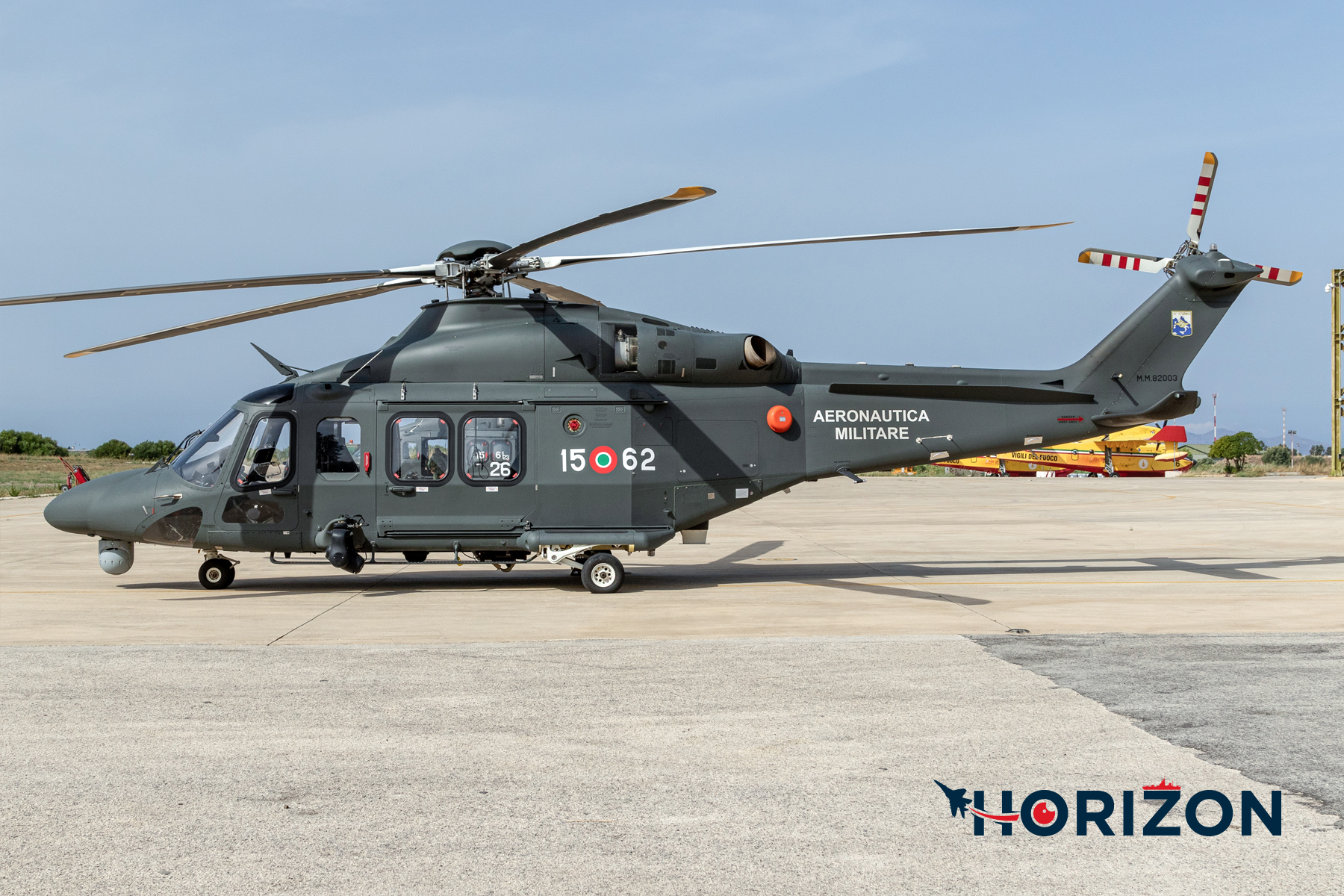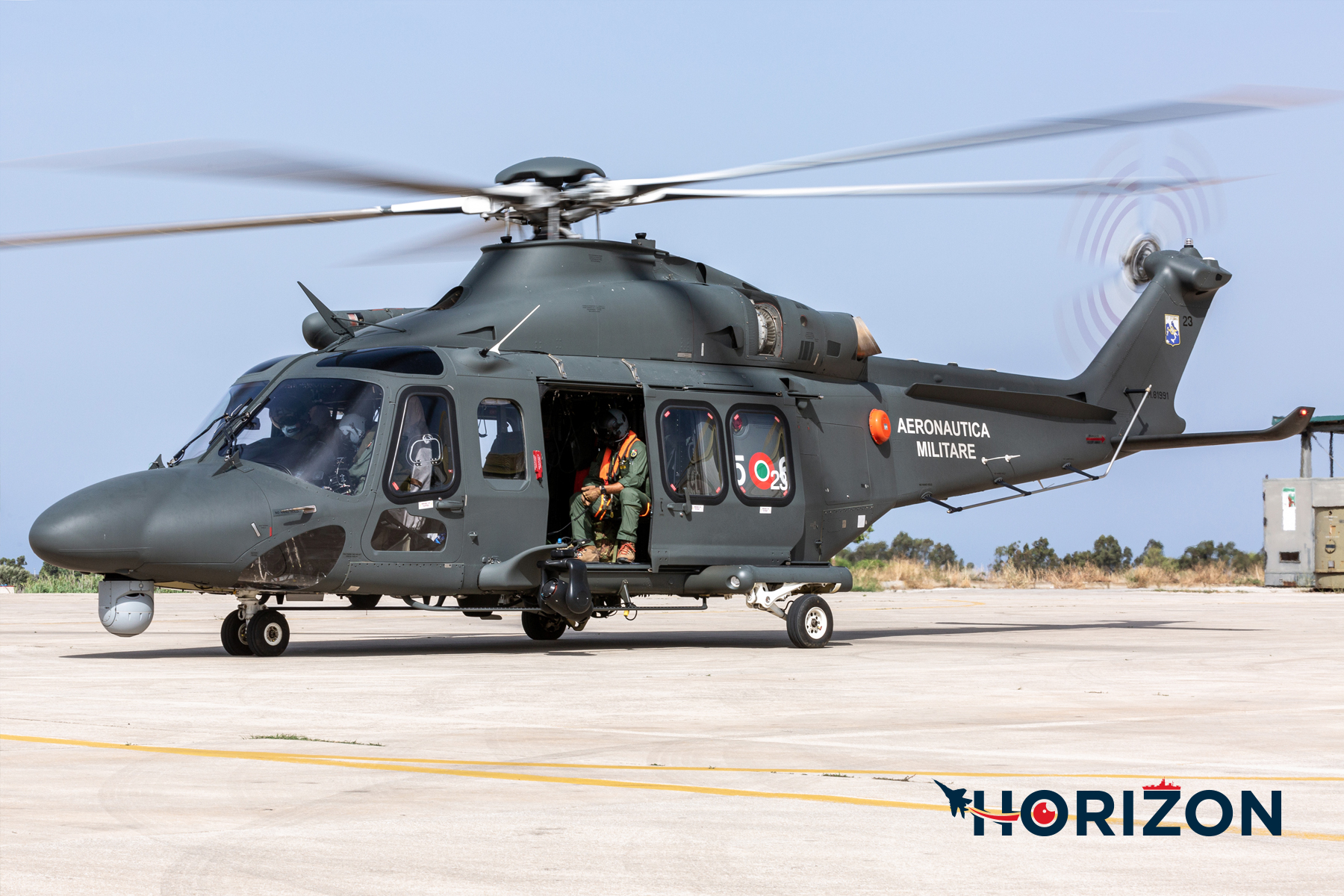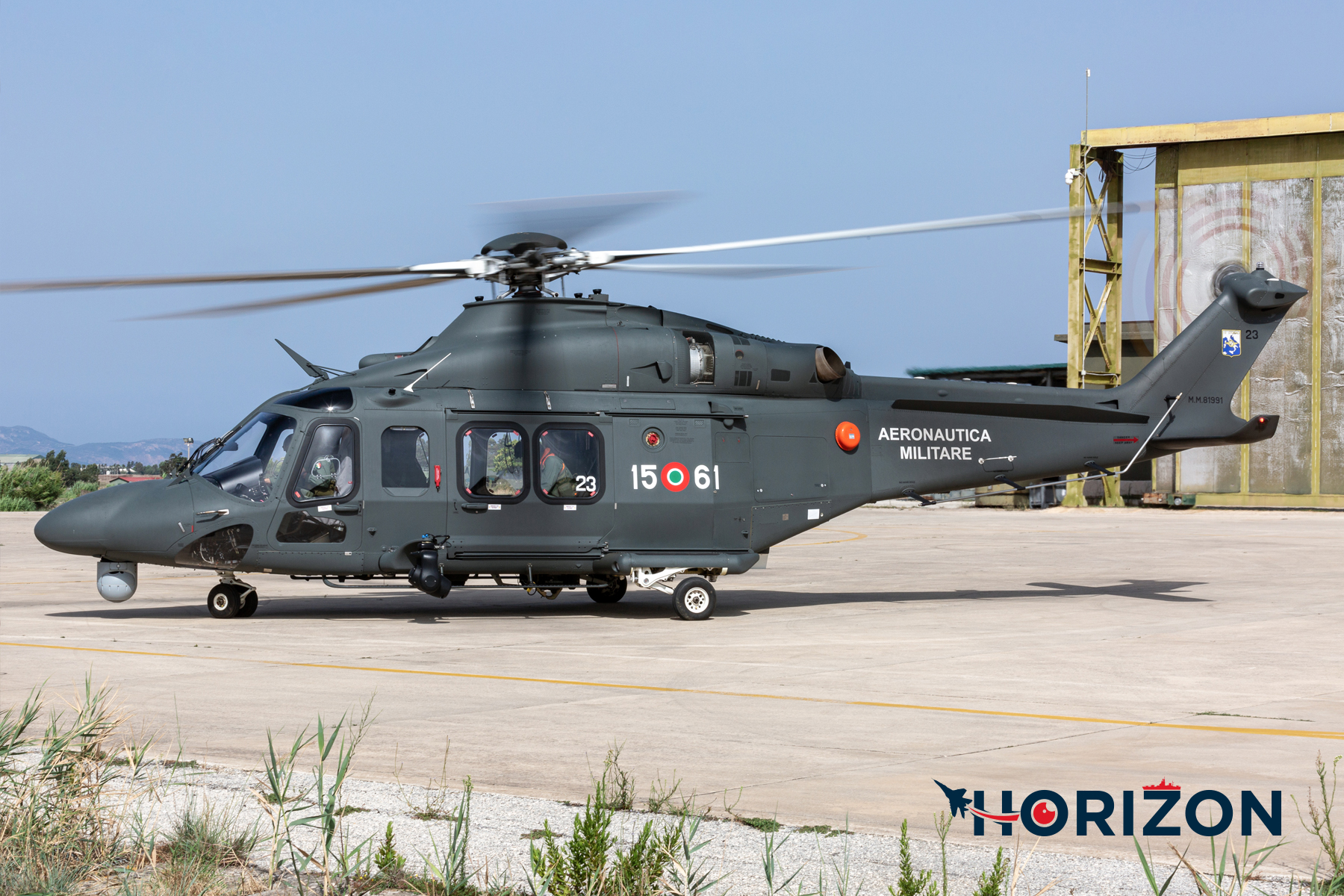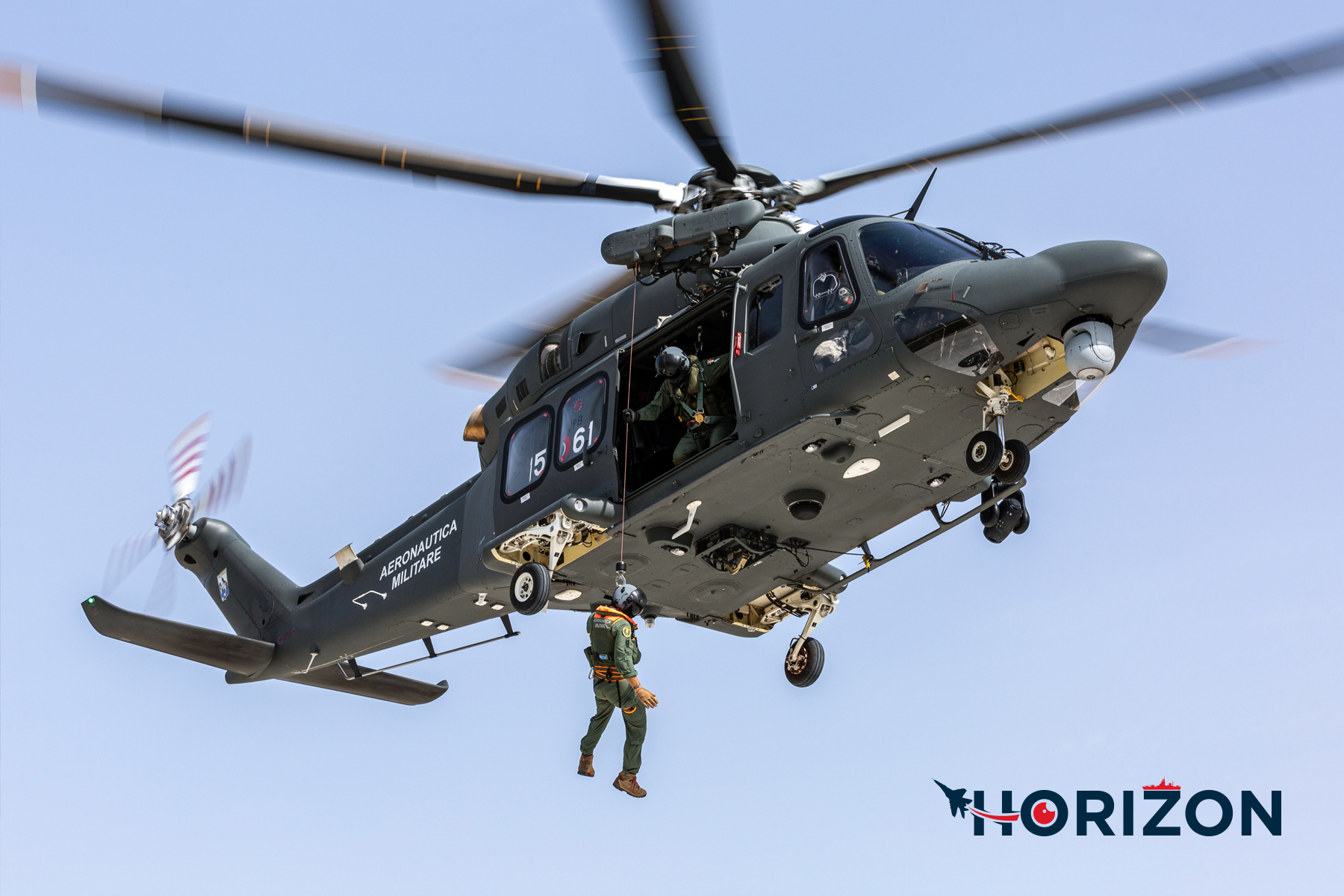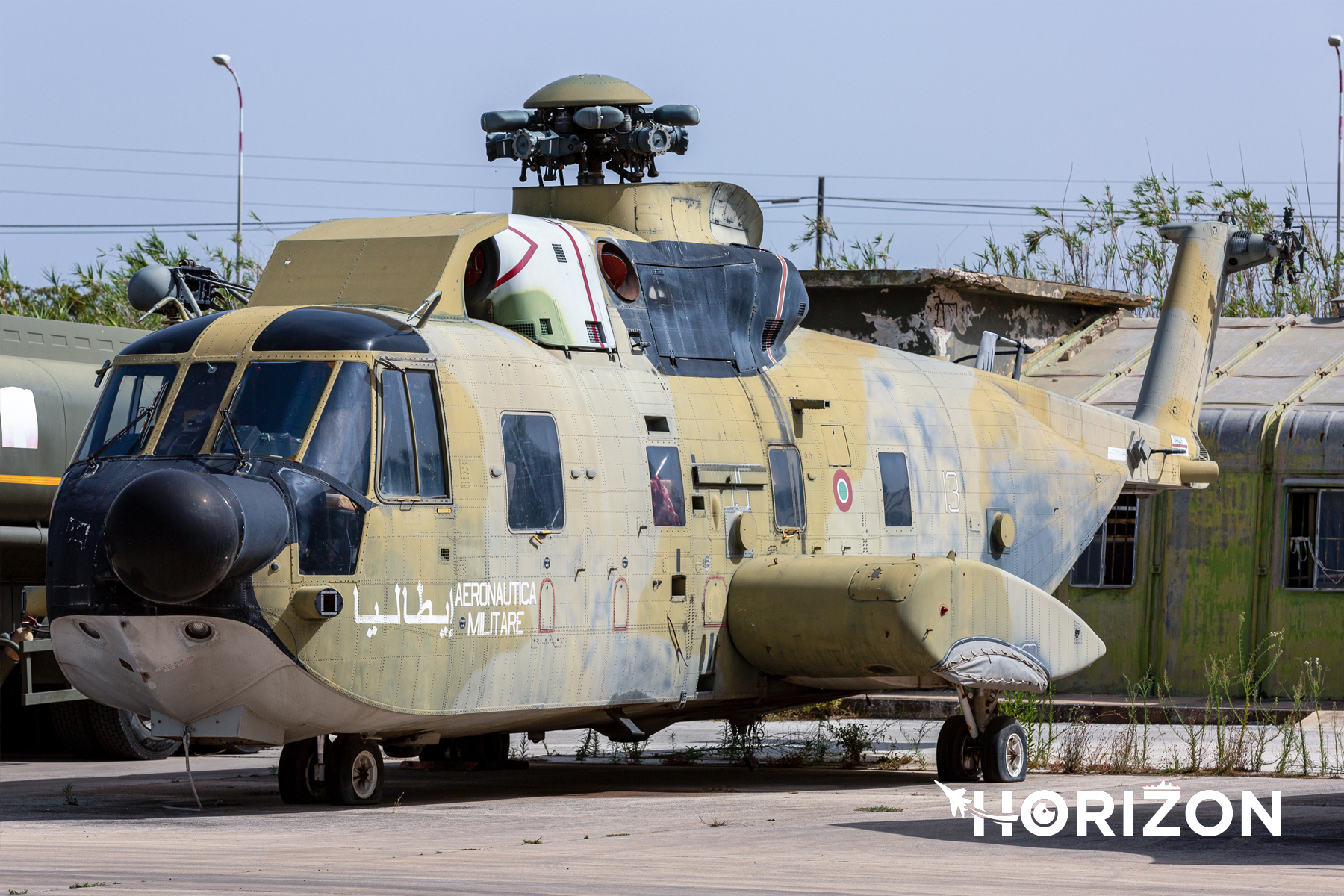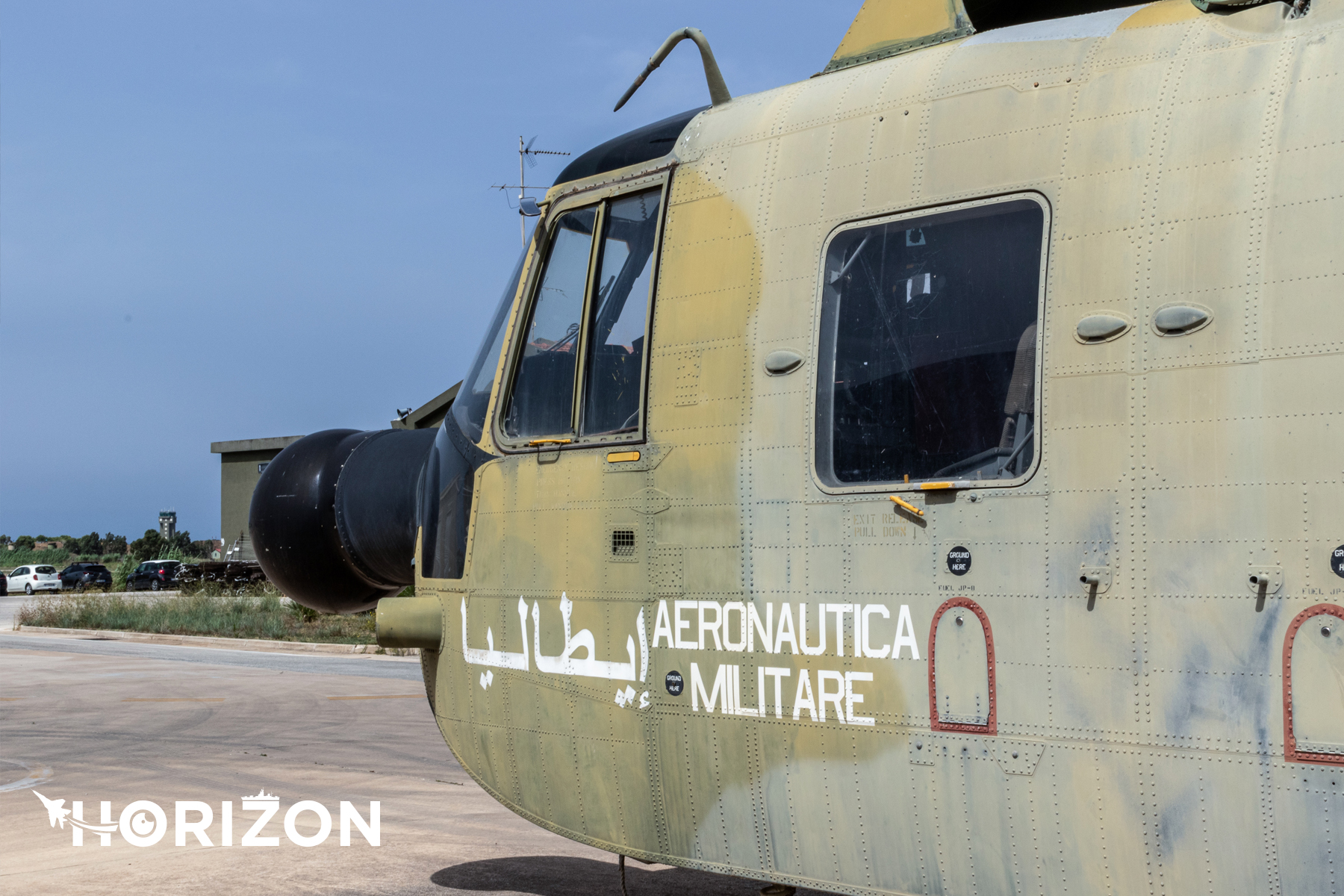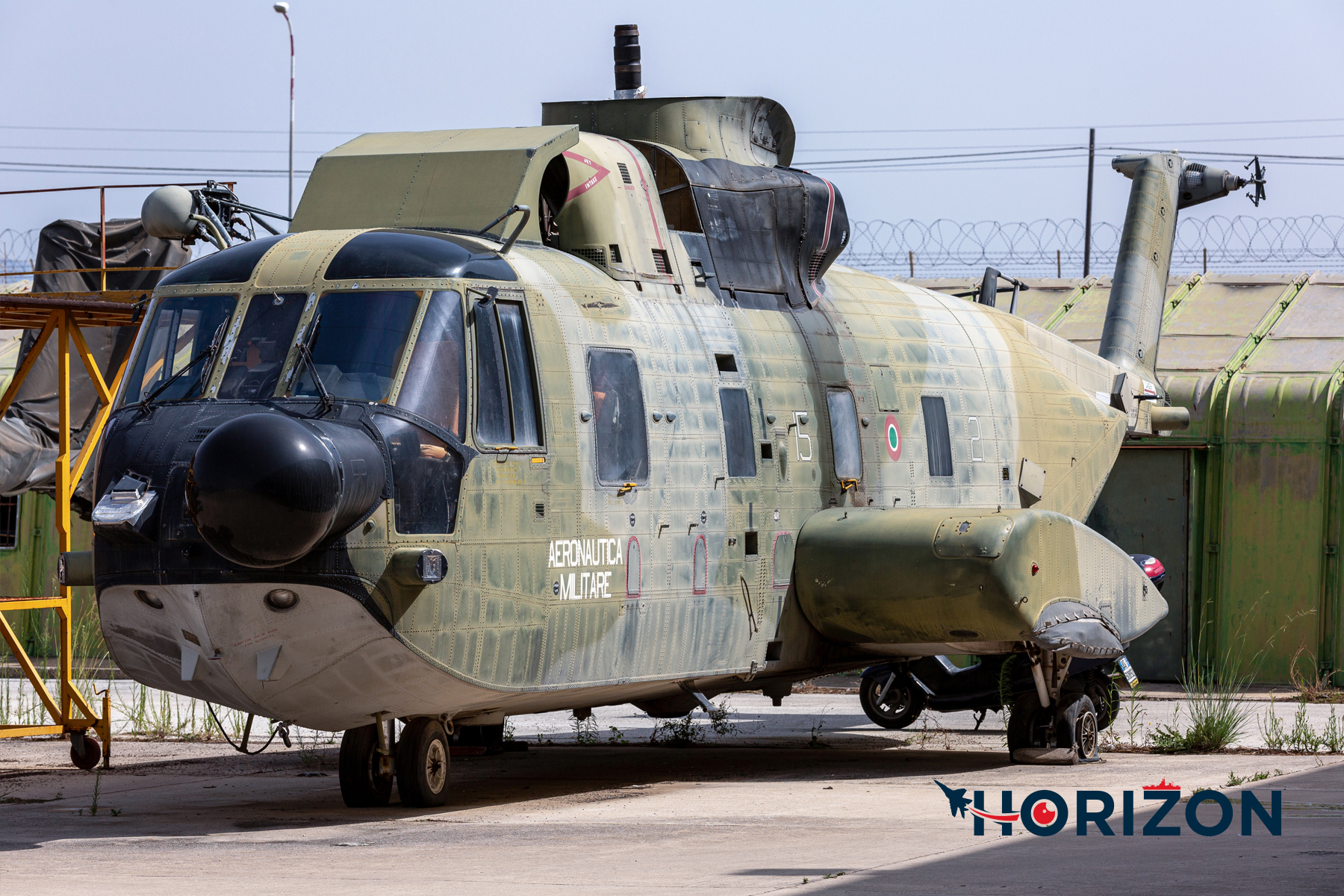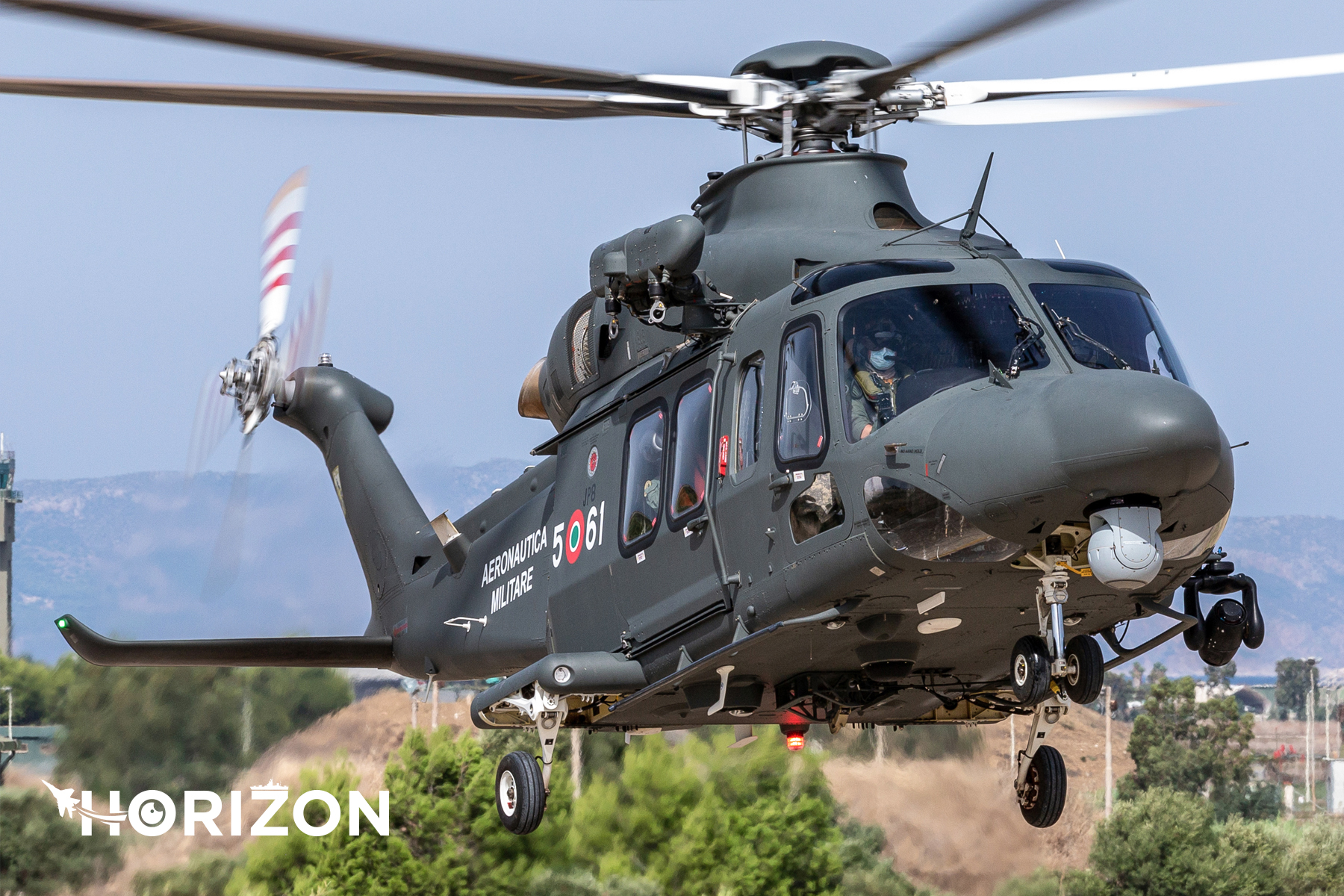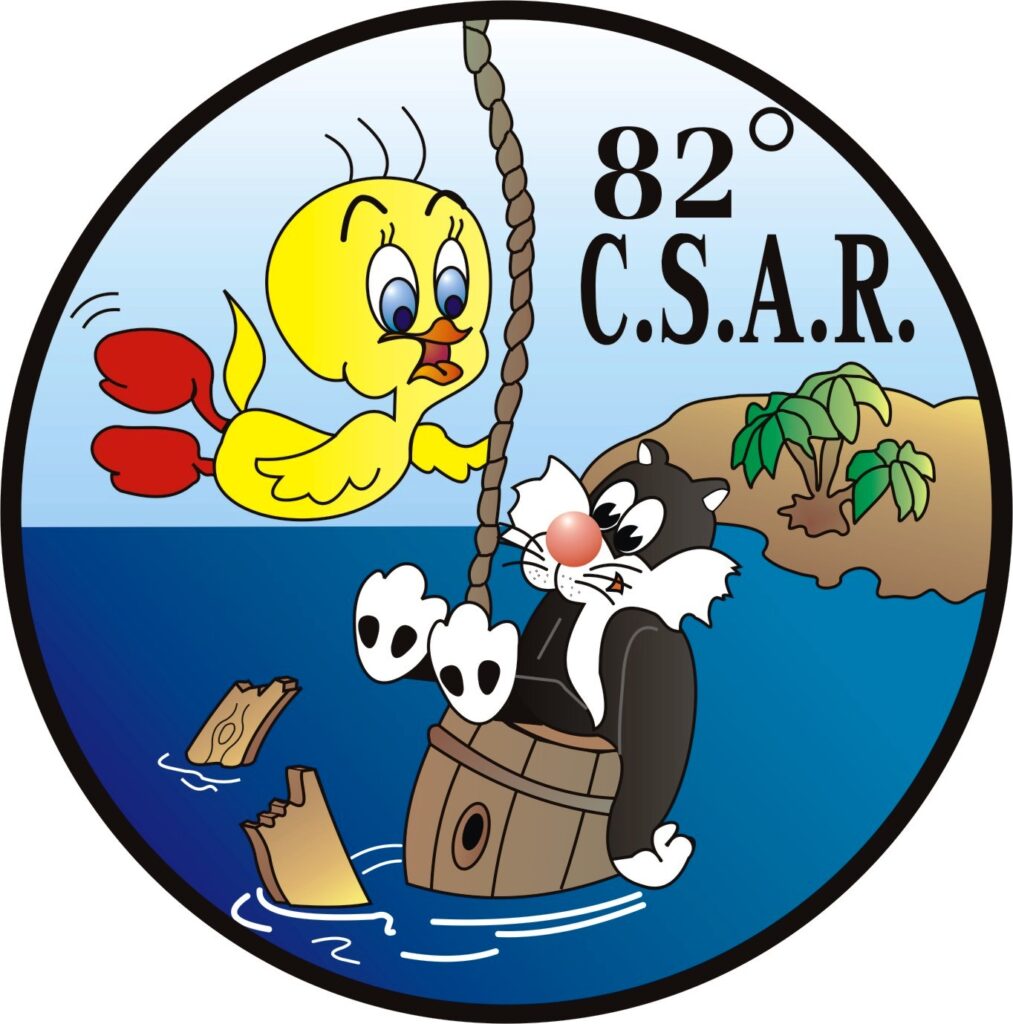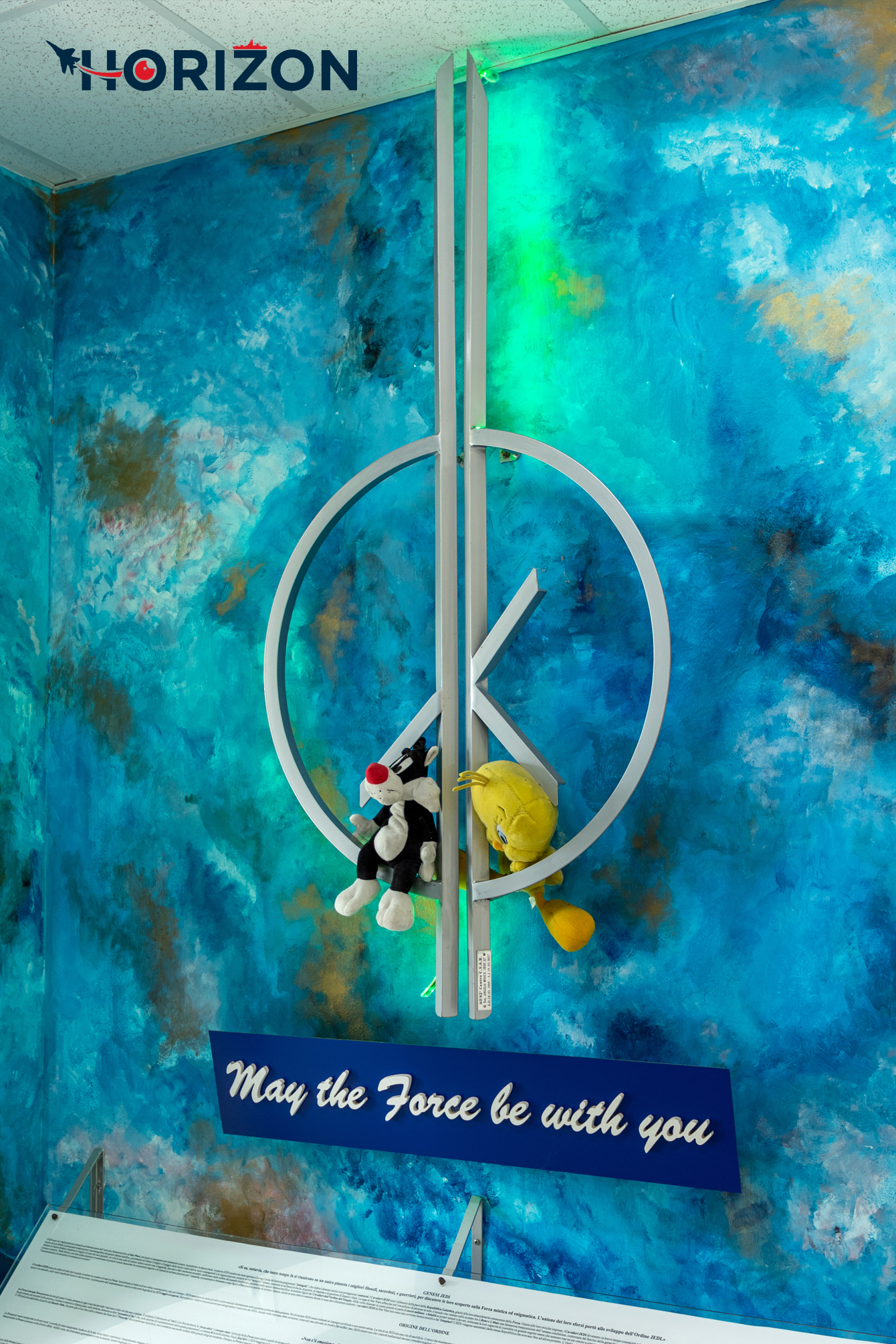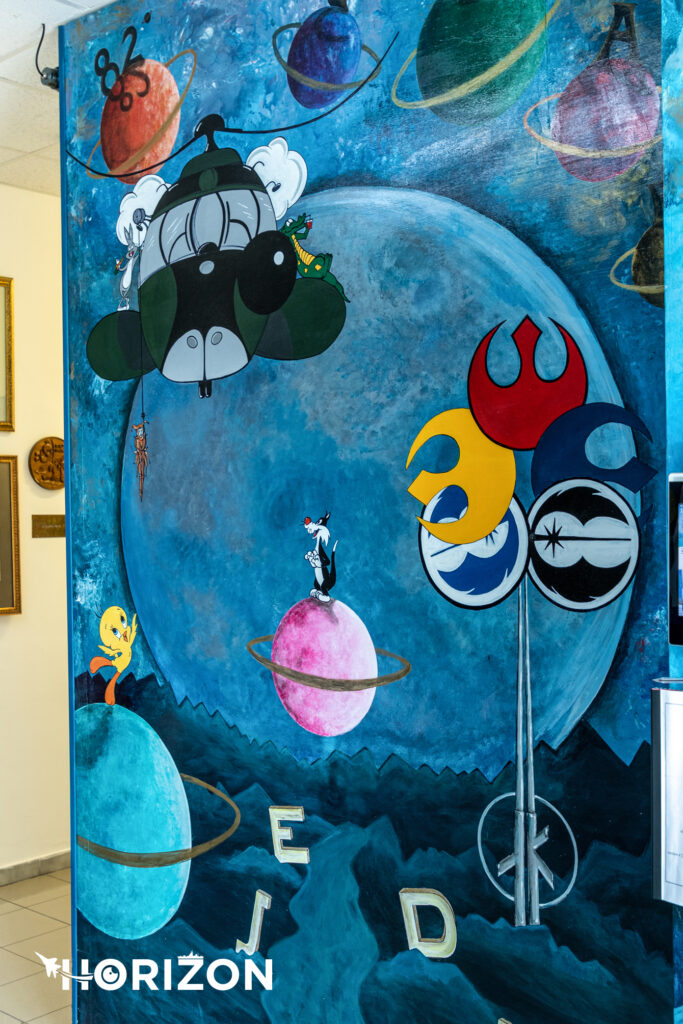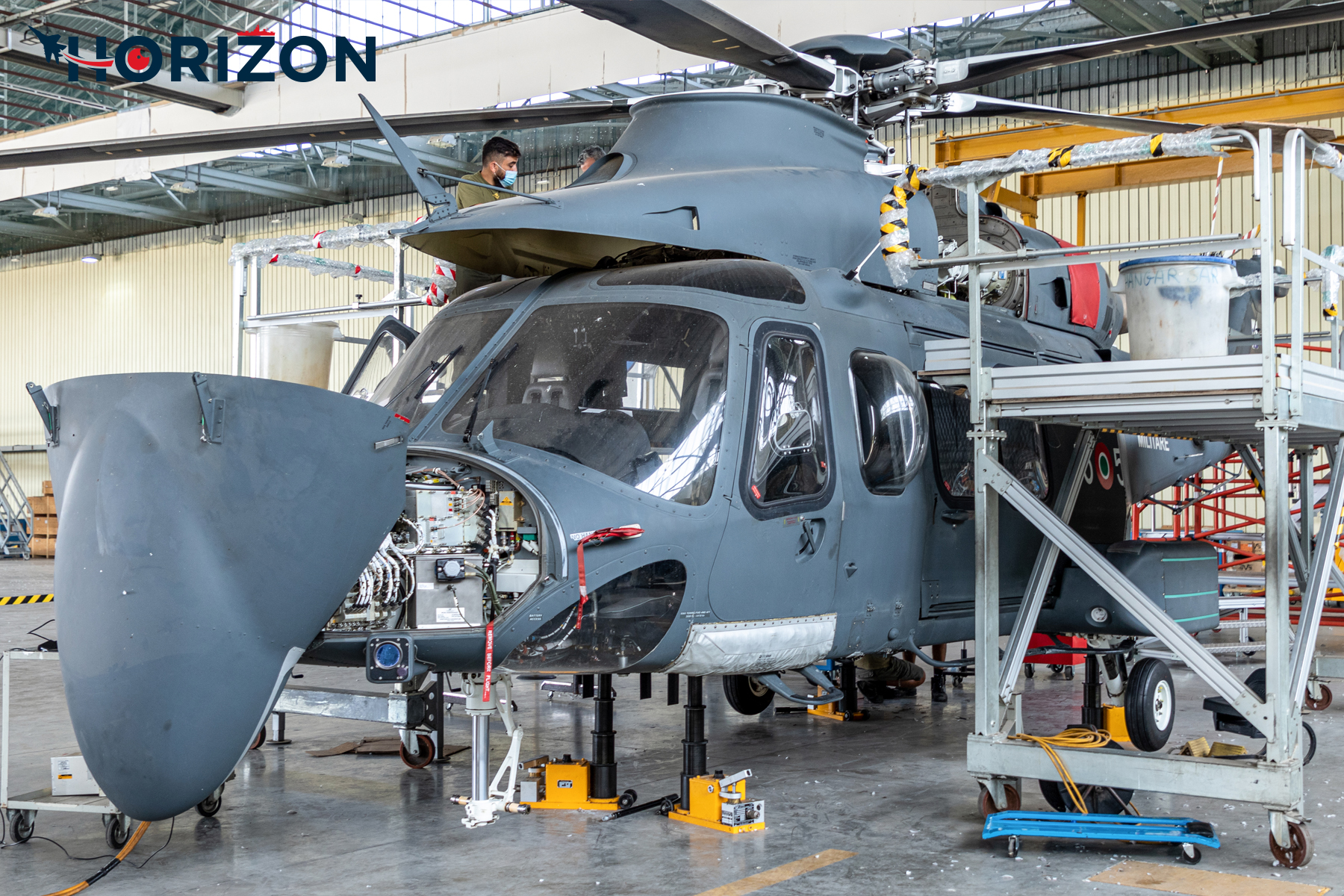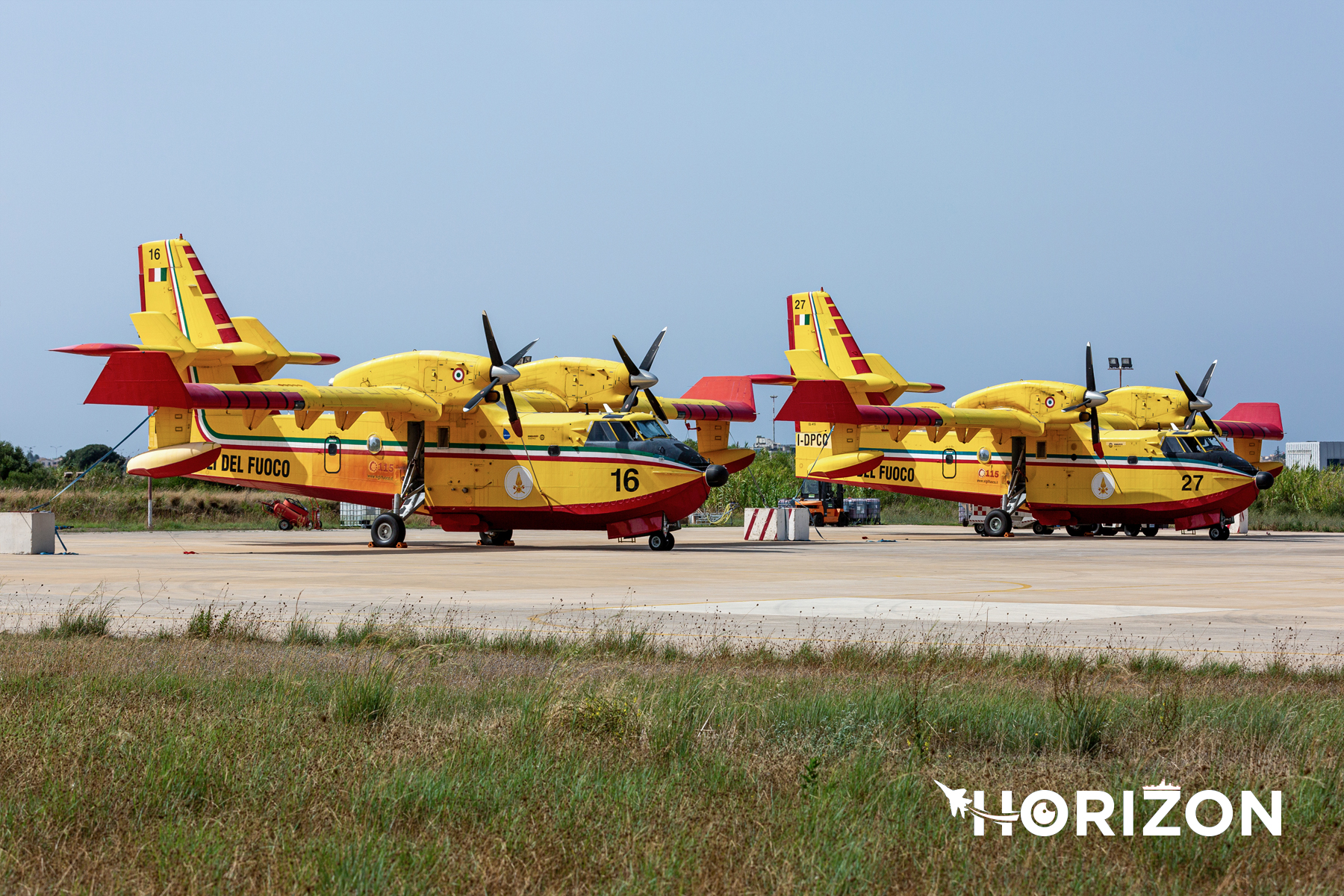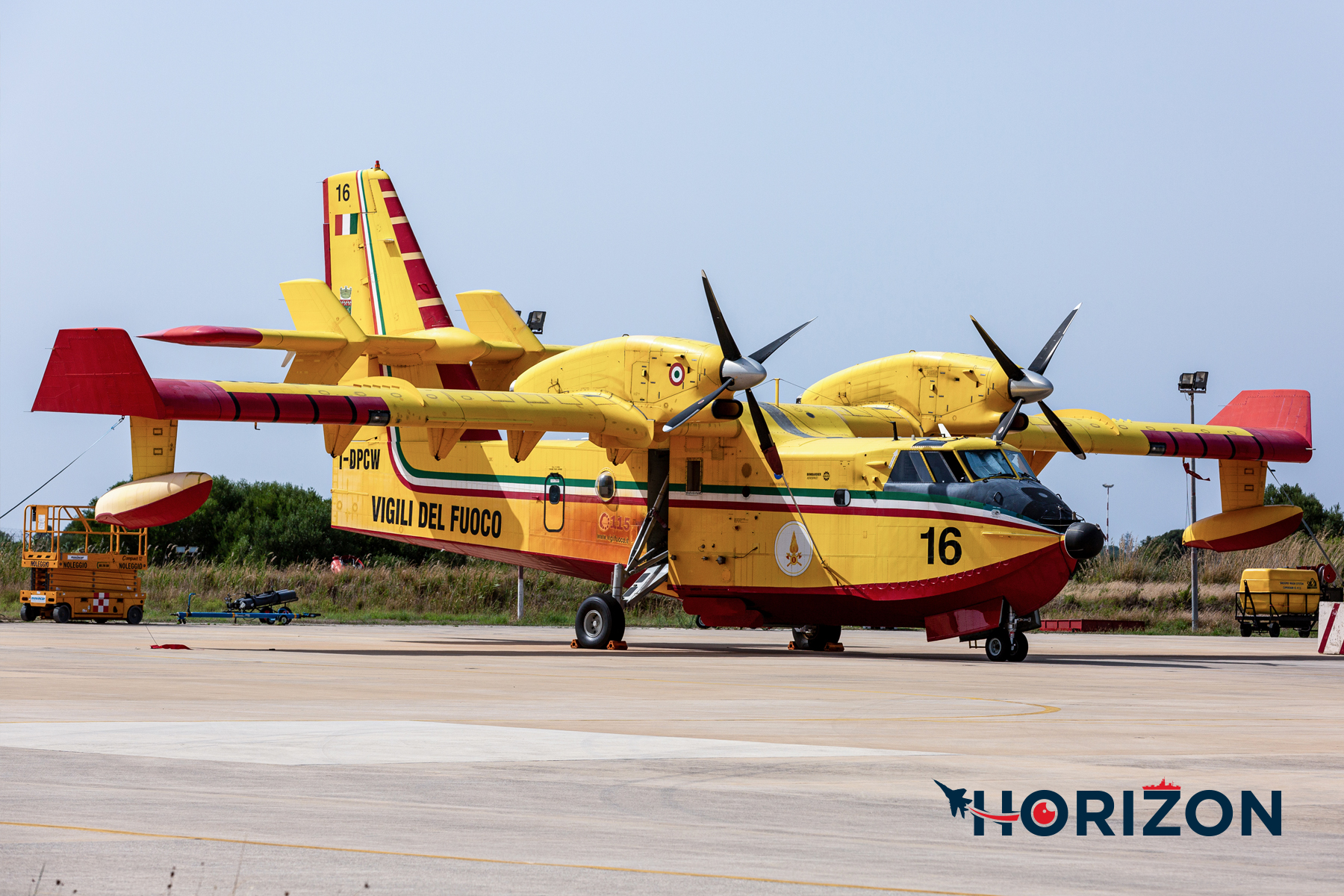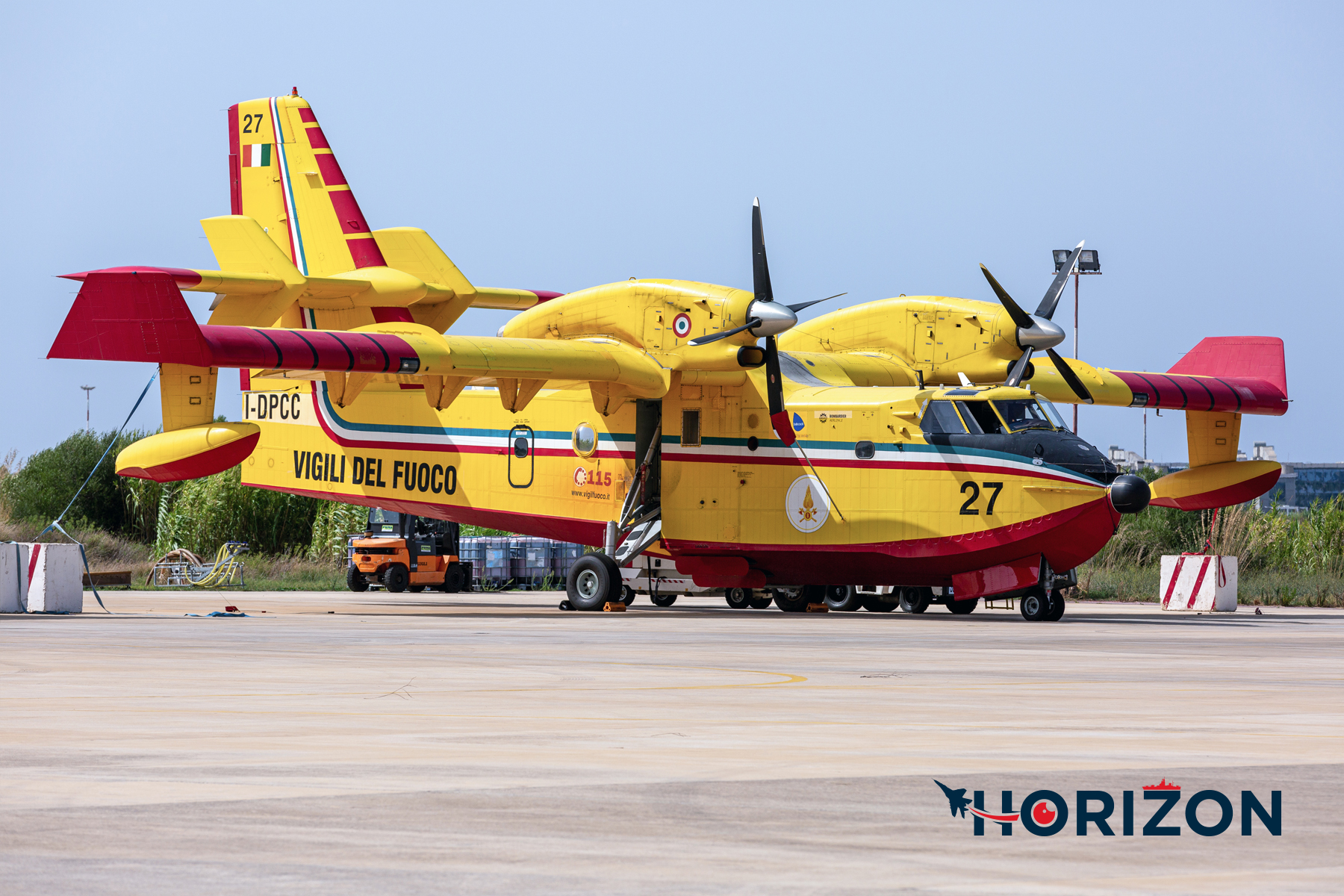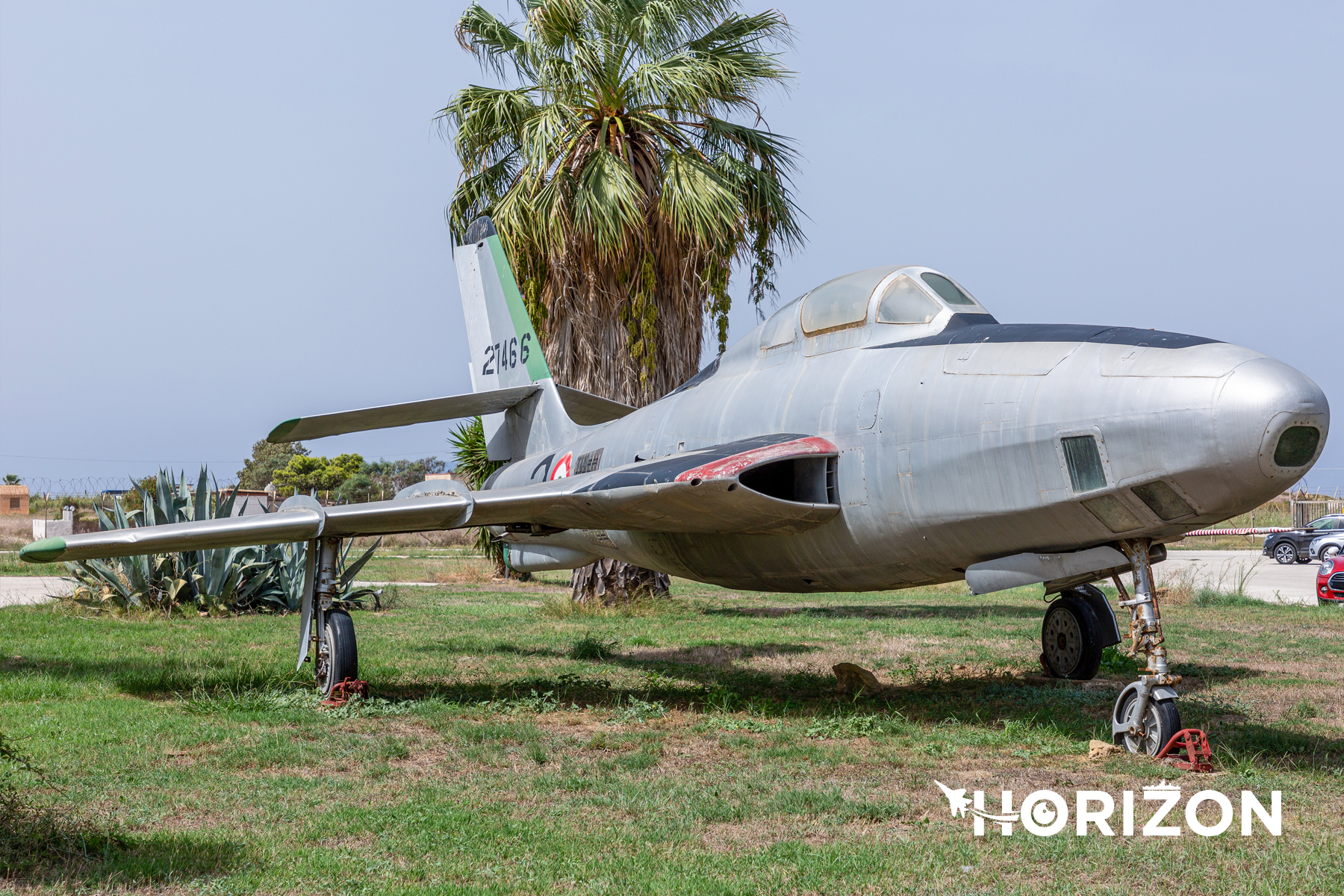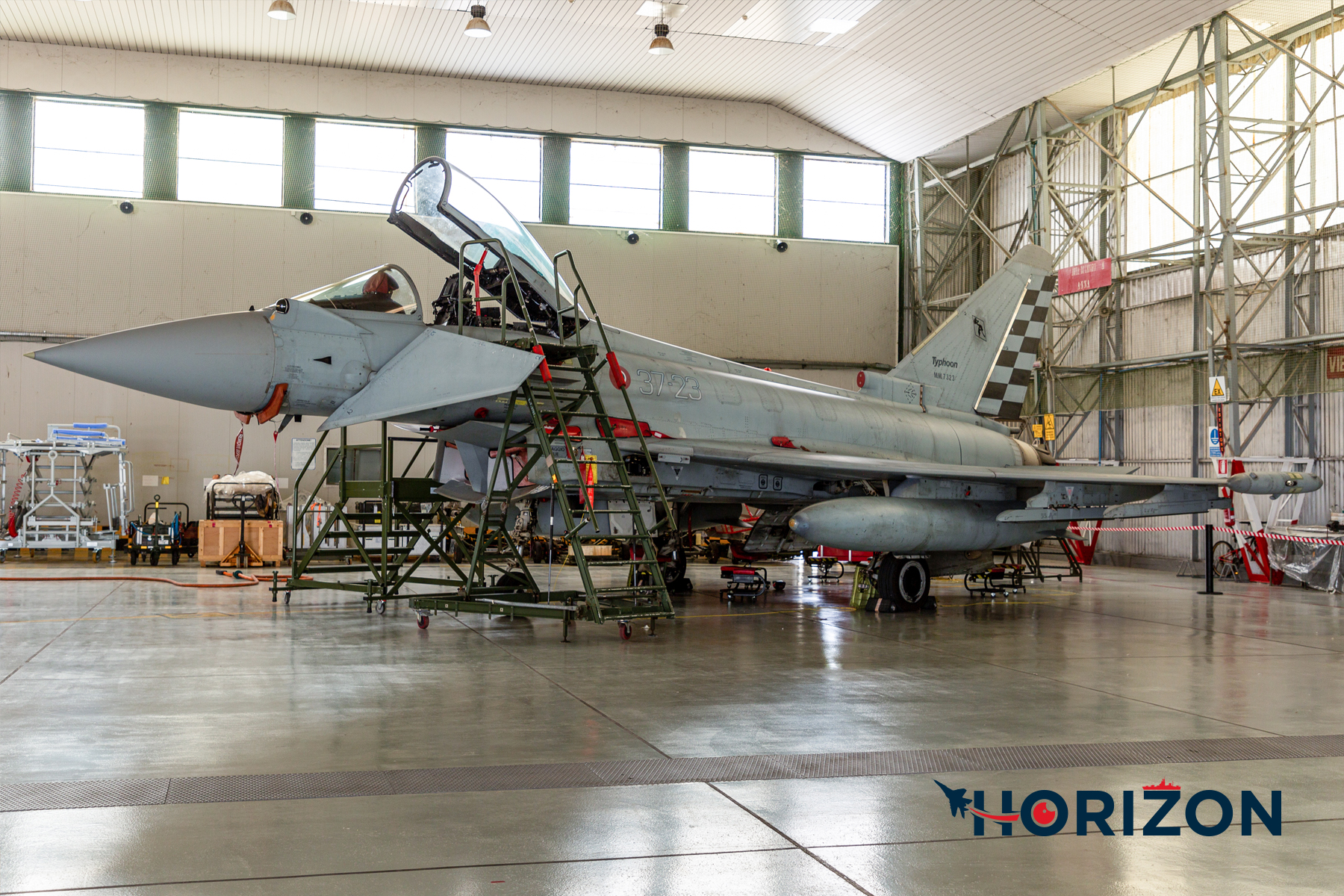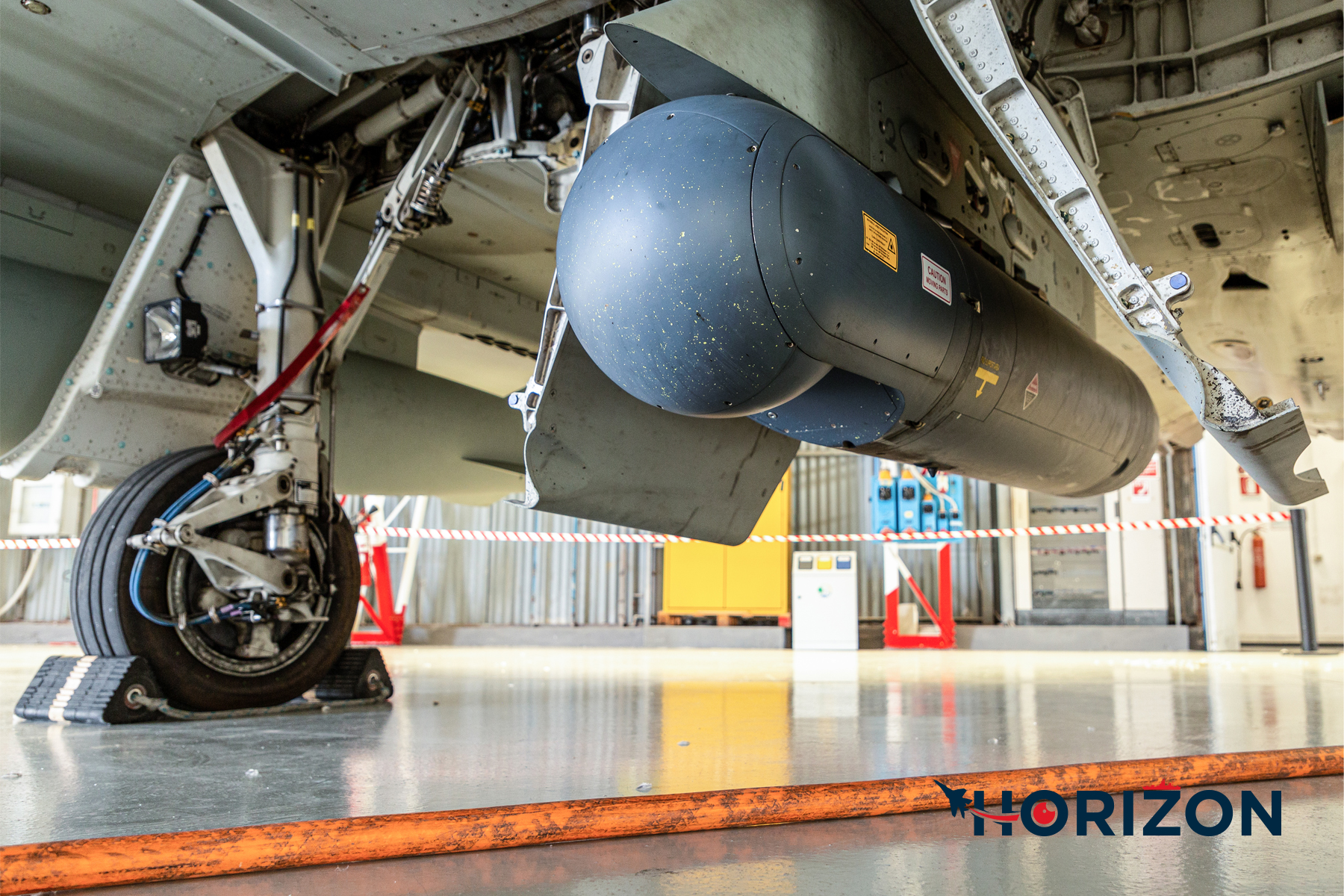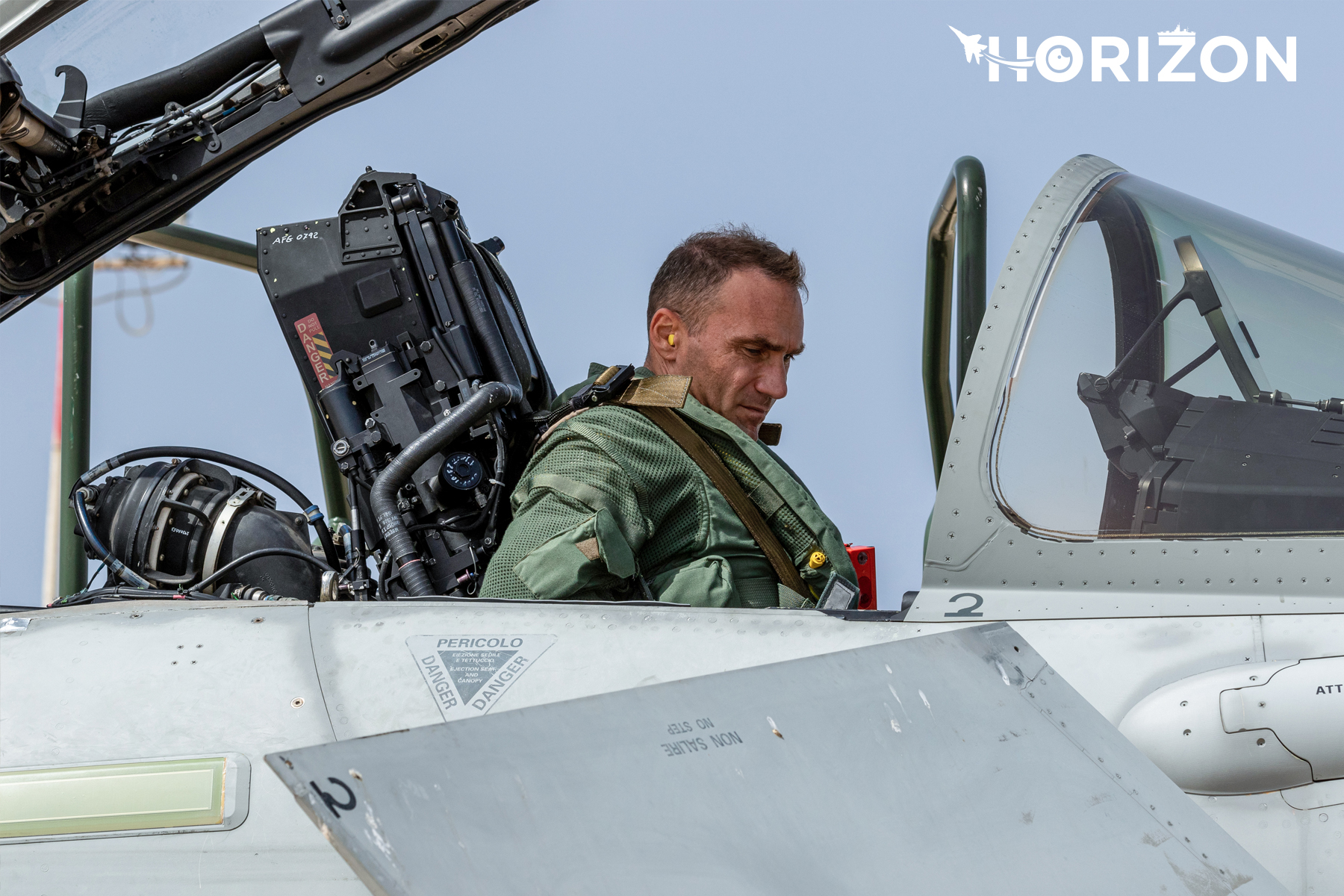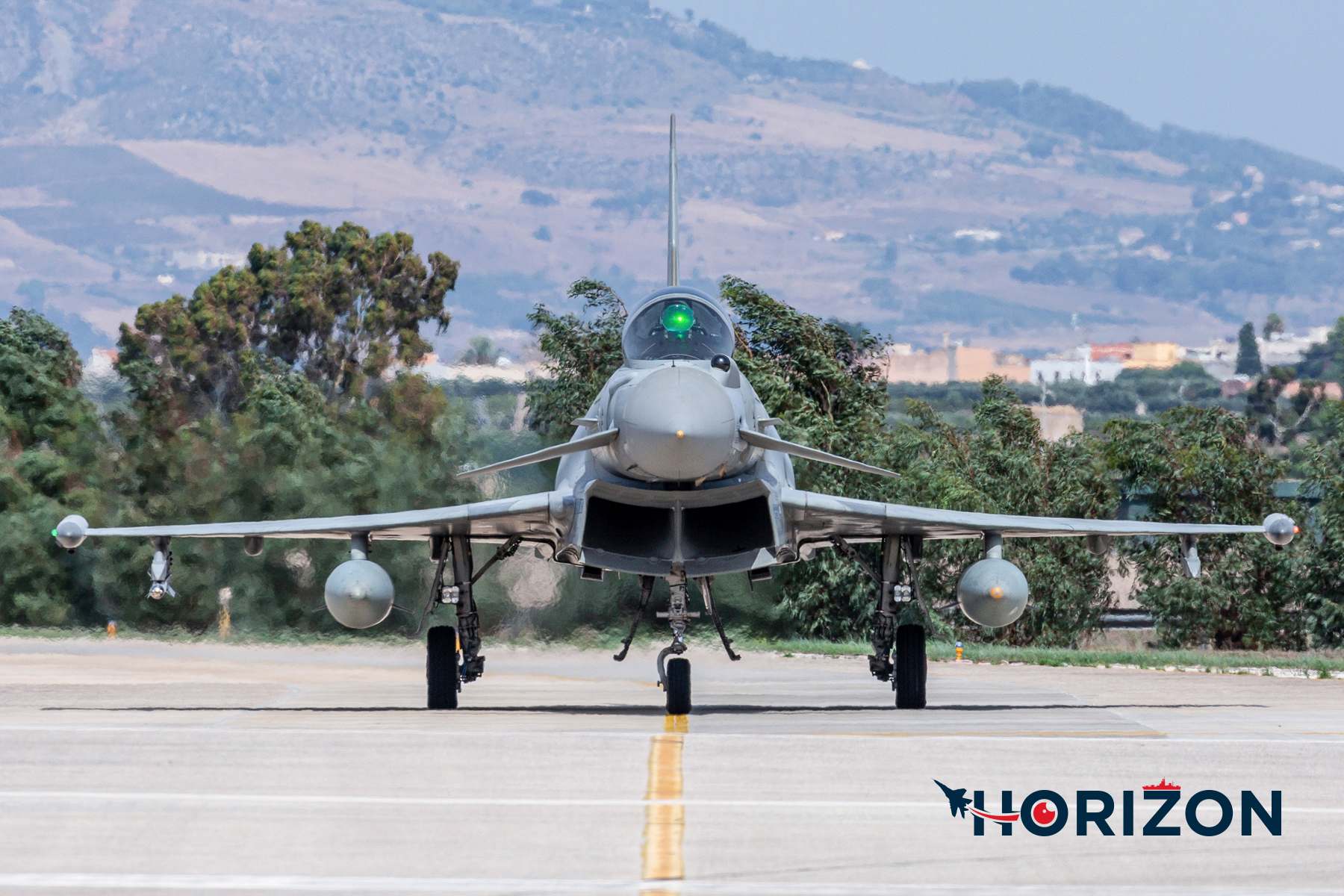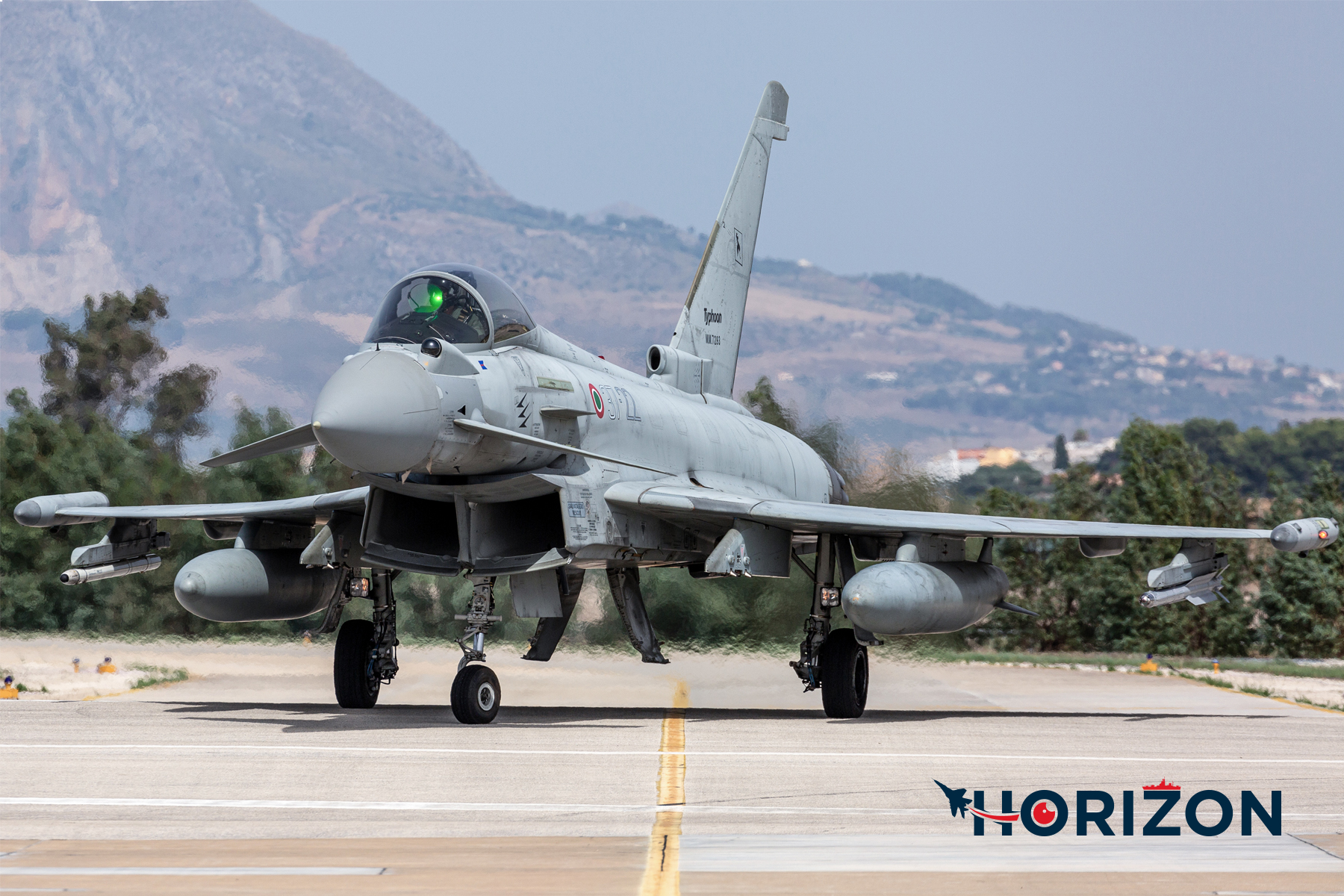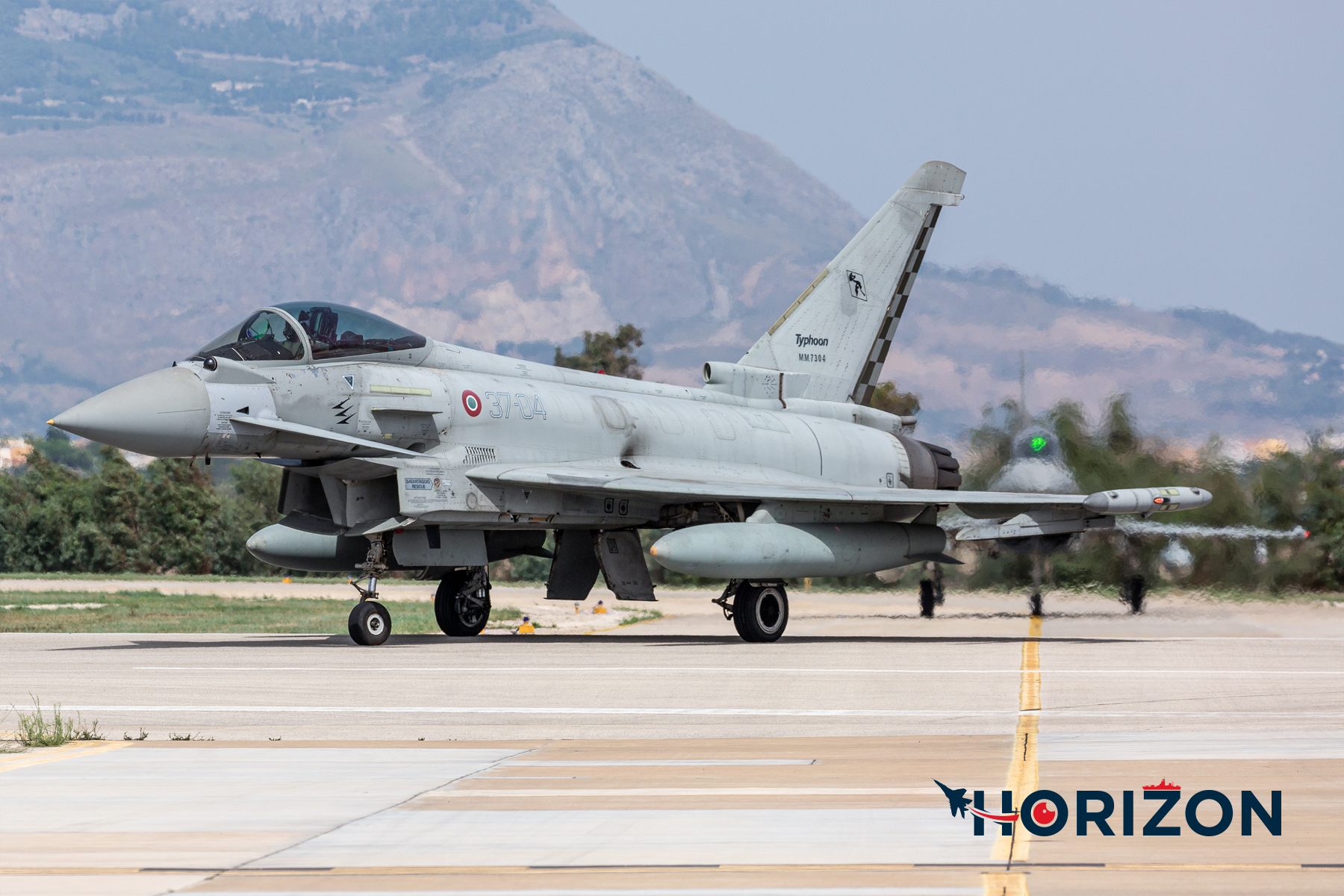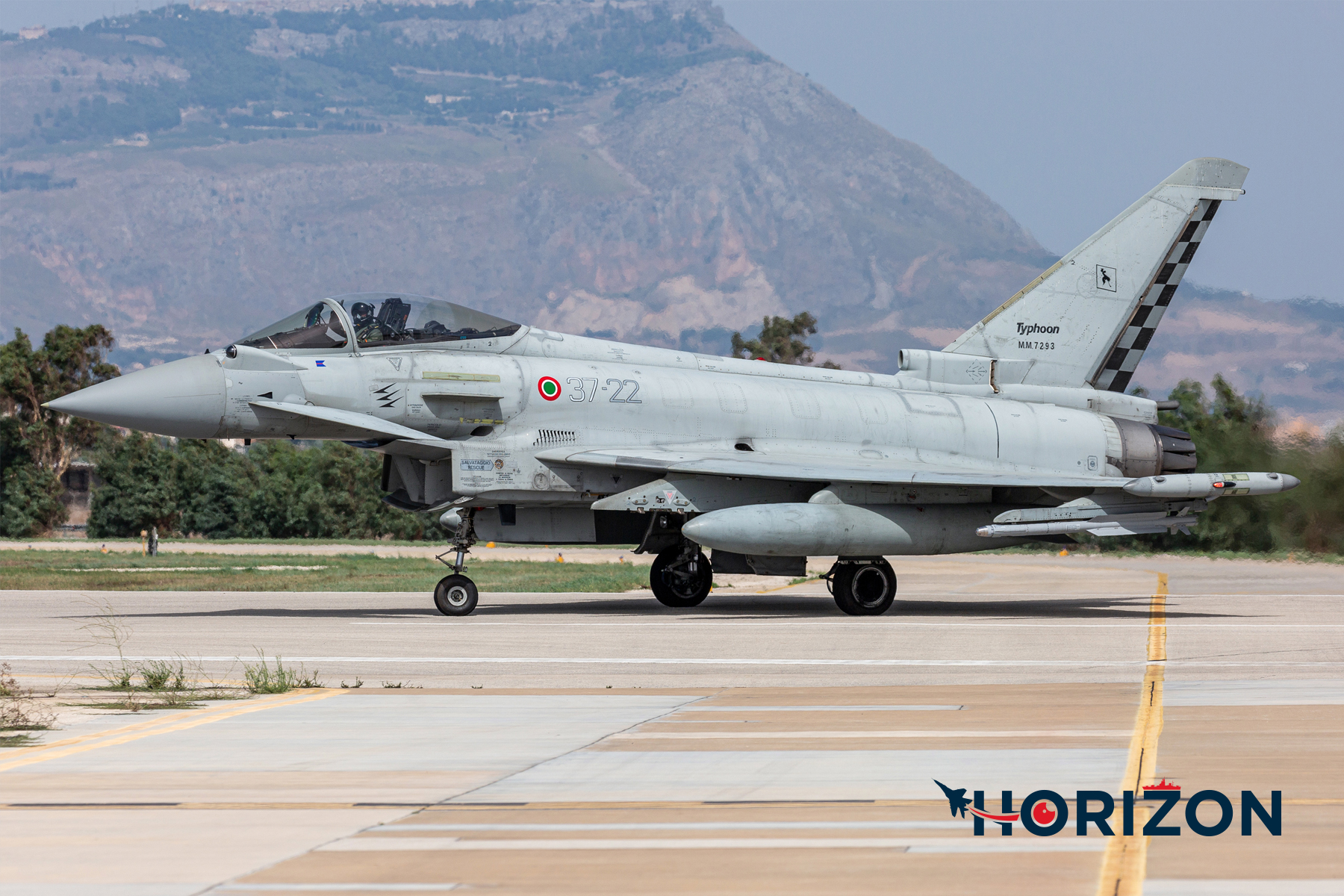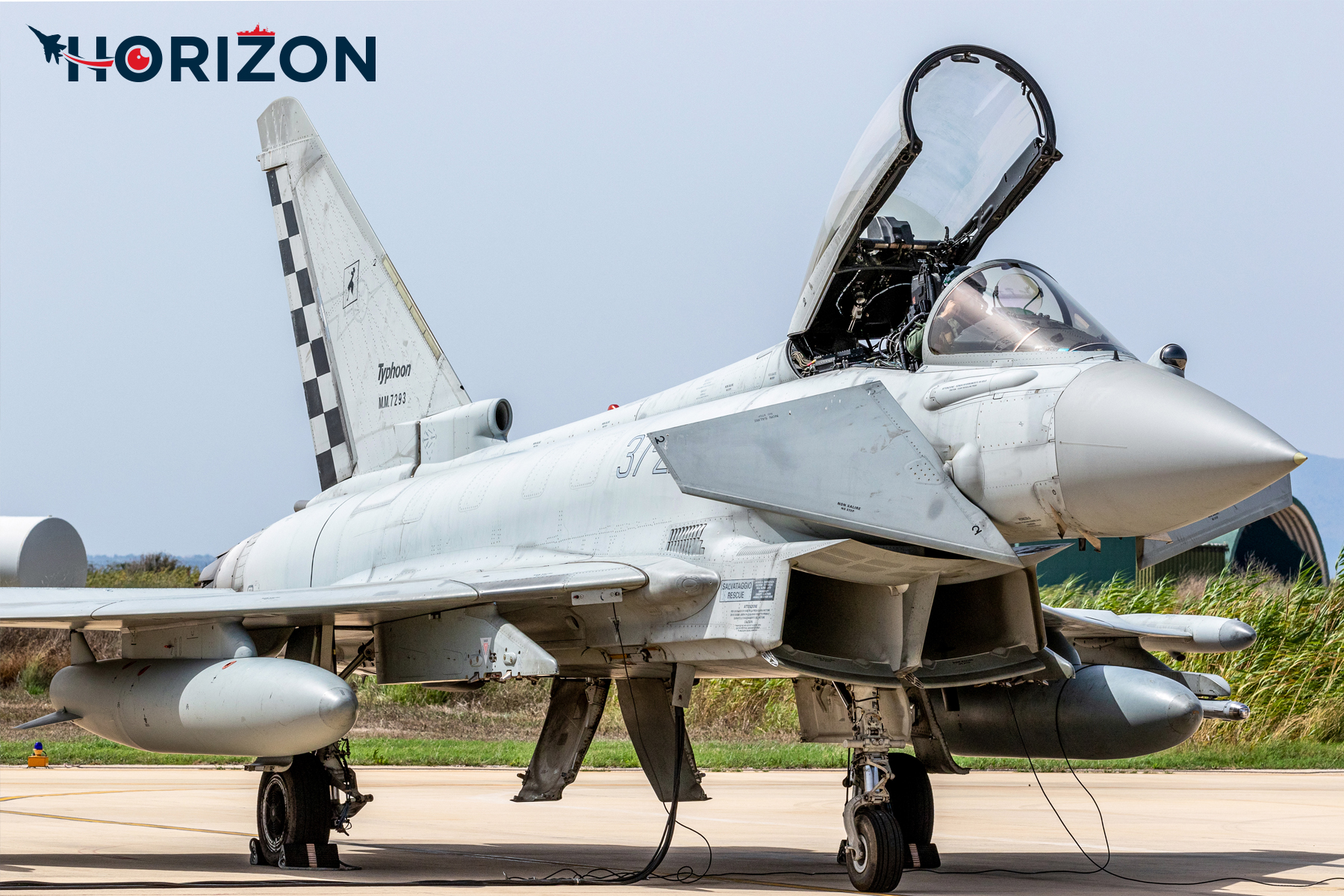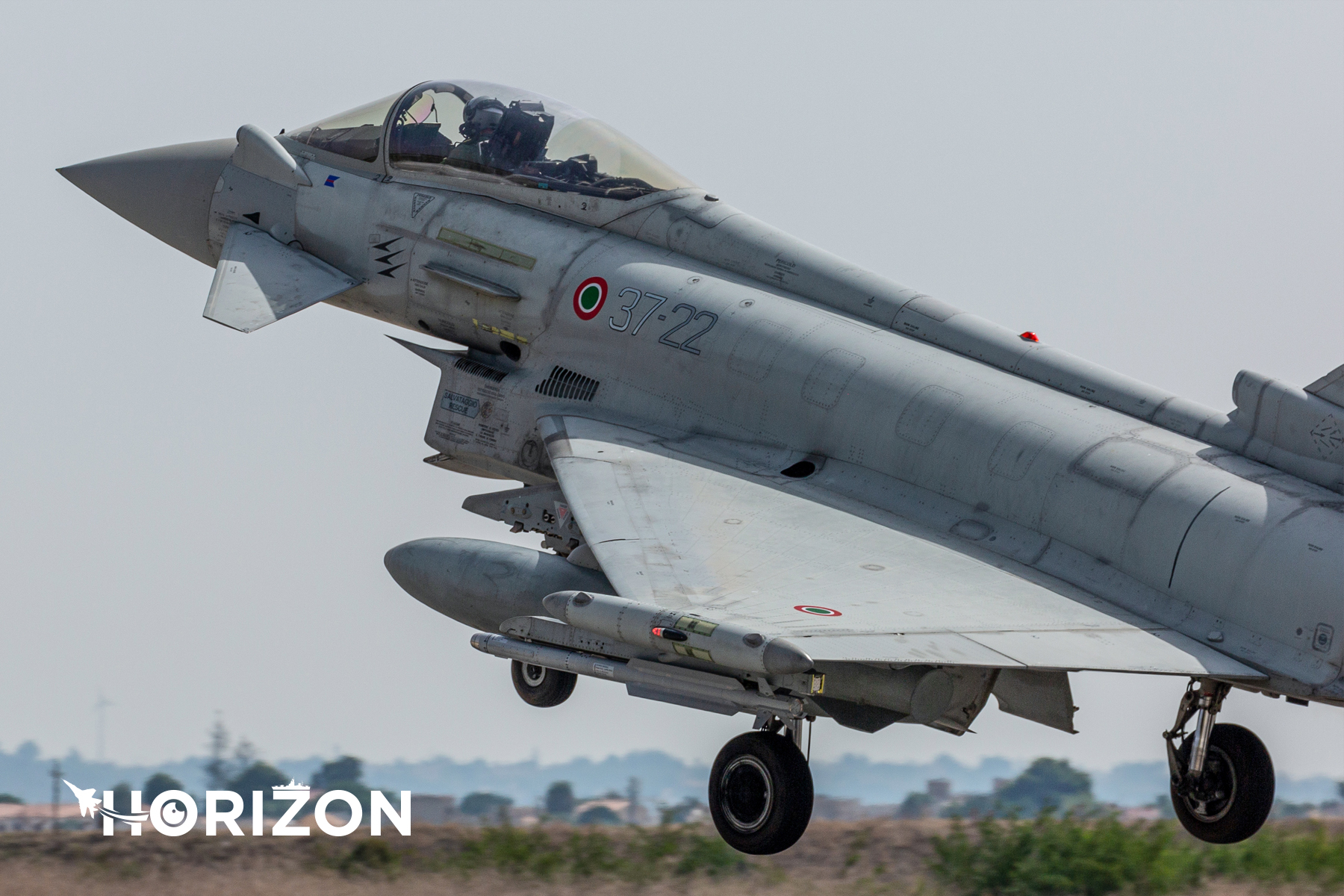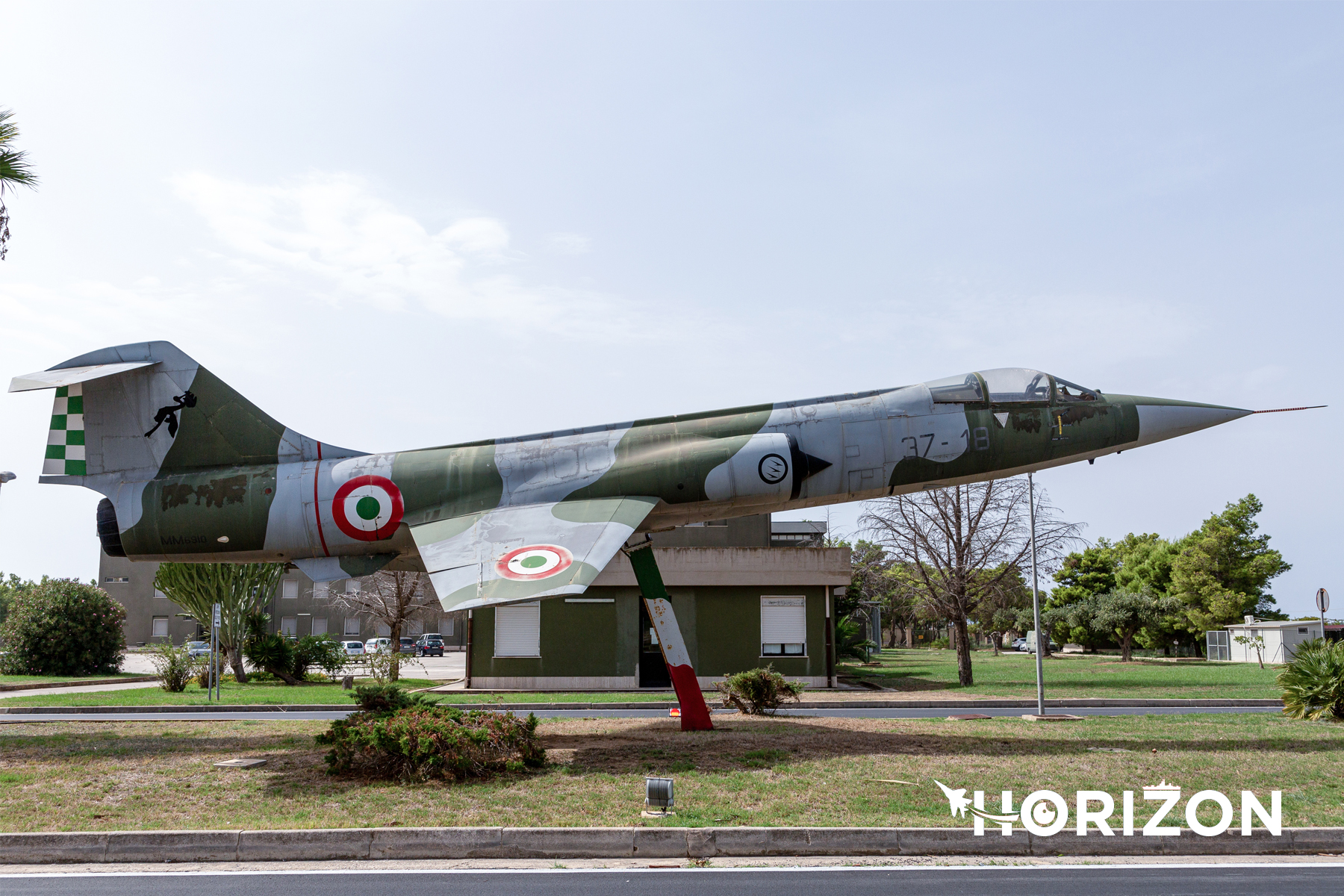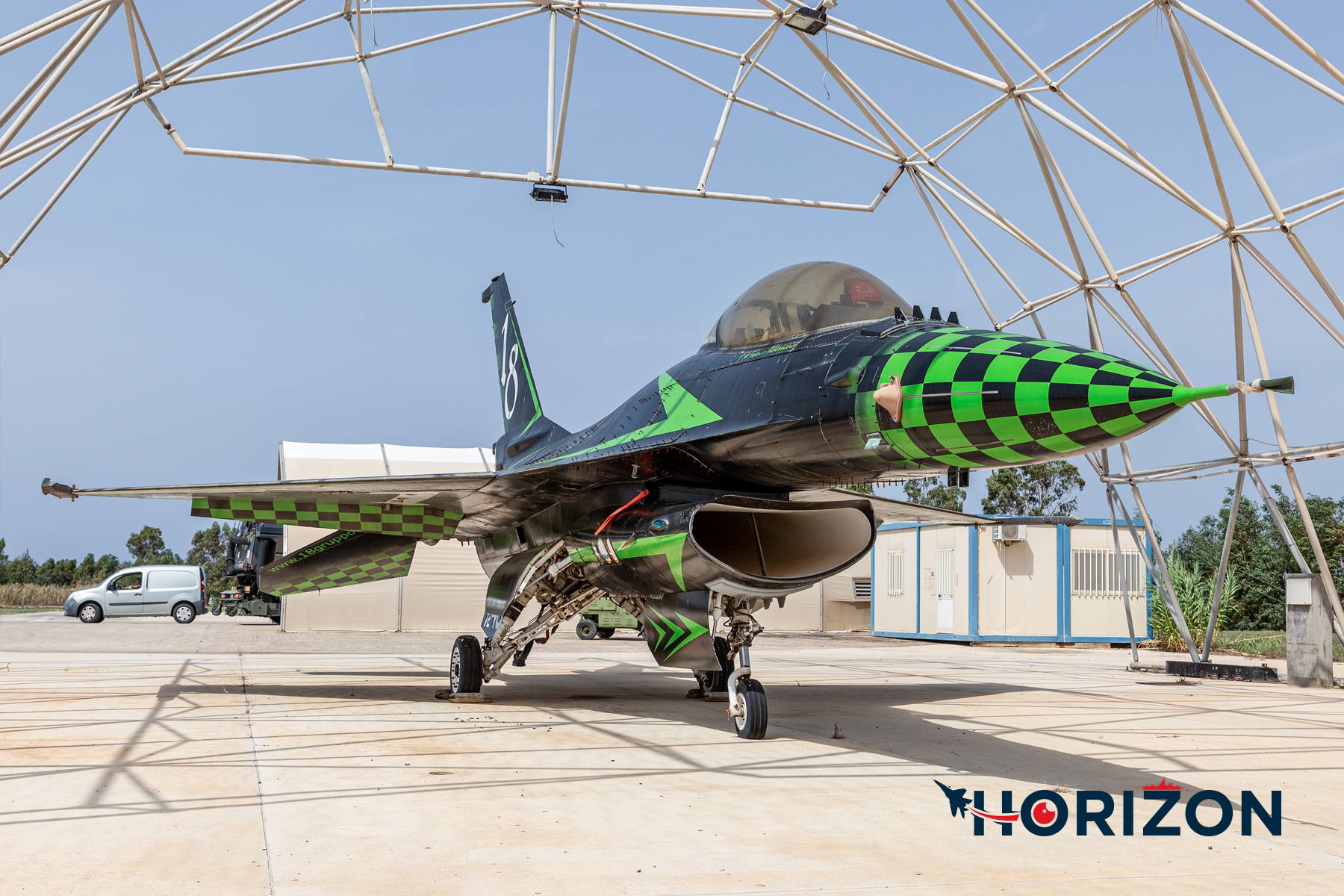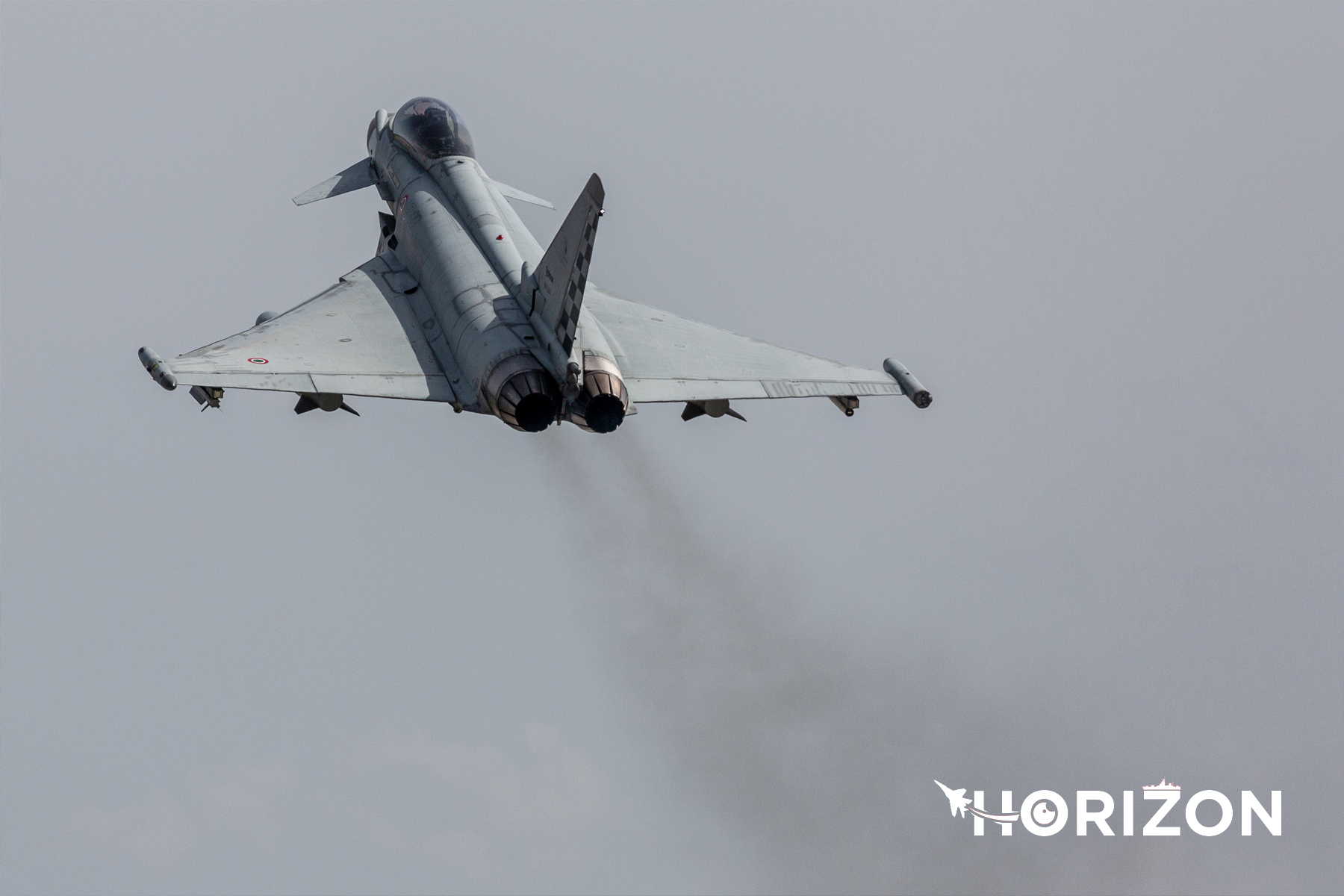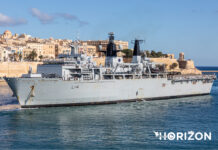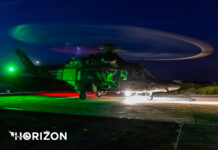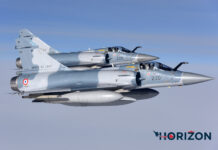One of the largest military airfields in Italy, Trapani-Birgi, is located near the port city of Trapani on the west coast of the island of Sicily in the south-central Mediterranean. It’s where the 18° Gruppo Caccia (18th Fighter Squadron), which is part of the parent 37° Stormo (37th Wing), keeps their distinctive chequered-rudder Eurofighters.
The 82nd Combat Search and Rescue Centre (82nd CSAR) – a detachment of the 15° Stormo flying HH-139 helicopters are also based here and a few civilian airliners use the civilian terminal at the base. NATO E-3A AWACS is occasionally stationed here on temporary duty since Trapani is one of the NATO E-3A Component’s forward operating bases.
On the 16th of September 2021, Paul Spiteri Lucas visited Trapani-Birgi Air Base. Paul was greeted on base by HH139 Pilot, Captain Filippo Conforti and was then accompanied to the 82nd CSAR quarters on base. After the briefing in the unit’s briefing room, the visit continued in the unit’s offices, operation centre and finished off at the main hangar and ramp. At the time of the visit, the unit housed three Leonardo HH139 helicopters, 1 HH139A variant, and 2 HH139B Variants. A crew was preparing for a training flight whilst another crew was on standby for forest fire fighting missions.
The 82nd Combat Search and Rescue Centre is one of five centres of the 15° Stormo of the Italian Air Force which guarantees, 24/7, 365 days a year, without interruption, operating in any weather condition, search and rescue teams around Italy ready for action. Activities are also in support of public utility such as the search and rescue for missing people over the national territory and over national and international waters, the emergency medical transport of patients in life-threatening conditions, the rescue of serious traumatized and support to civilians during natural disasters. For rescue duties, the HH-139 has a complement of two pilots, a winch operator, and a minimum of one rescuer, when the emergency is already known the helicopter can pick up a doctor or a nurse from a nearby hospital to assist.
The crews and choppers are also deployed on Military Missions such as recovery of downed aircrews over enemy territory (C.S.A.R.), air defense of the national territory as Slow Mover Interceptor (S.M.I), support to Special Forces, International humanitarian missions, and Security support for sensitive areas and targets during major public events on national territory.
Horizon took some images of the training flight that took place during the time our contributor spent at the 82nd CSAR grounds, in the article, there is a selection of the images that he captured.
The History of the 82nd CSAR goes back to 25th April 1924 when the 82nd Seaplane Squadron was formed on Taranto’s seaplane base with the 139th and 149th Flights. After being disbanded in 1928, it was reactivated on the 20th of August 1942 at Preveza Airport (Greece) as the 82nd Squadron Long Range Maritime Reconnaissance, without the 139th Flight. On the 6th July 1982, the 82nd was finally reactivated at Trapan-Birgi Air Force Base and assigned to the 15° Stormo, flying the Agusta-Sikorsky HH-3F “Pelican” which was fully replaced by the HH139 in 2015 on base. A number of HH-3F ‘Pelican’ fuselages are still on base.
In the last 39 years the helicopters of the Squadron saw action during peacekeeping missions “Albatros” in Somalia 1993, “Arcobaleno” and “Alba” in Albania 1997/98, “ Joint Guardian” in Kosovo 1999, Rescue Mission over Stromboli for 3 months in 2002, “Antica Babilonia” in Iraq 2003 and 2006, rescue mission over Aquila after the earthquake – Operation ‘Gran Sasso’ April 2009, “Odyssey Dawn” and “Unified Protector in Libya 2011, and Operation “Sabina”, to support the population after the Amatrice earthquake, August 2016.
From its inception, the 82nd CSAR has more than 42,000 flight hours, 7,500 Rescue Missions, and more than 750 people saved.
The unit’s Badge shows tweety the bird rescuing Sylvester the cat, on the cartoon we always see Sylvester the cat trying to catch and eat tweety, but the unit’s stem shows that tweety is rescuing Sylvester although technically he is his enemy, so practically the unit shows that they are there to save if needed even their enemy. The three palms in the background represent the old callsign of ‘Palma’. Nowadays ‘Jedi’ is the unit’s callsign and it is coming from the Skywalkers family of Star Wars.
Noticed also on the ramp of the 82nd CSAR where two CL-415 Canadair owned by the Italian Government with markings showing that the aircraft are part of the Vigili del Fuoco – National Fire Fighting Service but are fully operated by Babcock. The aircraft are on temporary duty at Trapani in support of firefighting operations mainly in Sicily but could also be sent to other regions in southern Italy if needed during the hot summer.
After visiting the 82nd CSAR, Paul was welcomed to the 37° Stormo (37th Wing) by Major Cristian Angelillo, the Public Affairs Officer and the Chief of the Maintenance Unit of the 18° Gruppo Caccia (18th Fighter Squadron).
After a short tour of the base, Paul was then escorted to the 18° Gruppo Headquarters where just by approaching the area one could sense the rich history and heritage of the century-old Squadron: an RF-84F Thunderflash in squadron markings shows itself well in front of the Command building.
Once inside Paul was received by Major Ilaria Ragona, the 18th Fighter Squadron Commander, who assumed the command just three days before Horizon’s visit.
The tour continued to the main maintenance hangar where three aircraft were undergoing some maintenance checks, and one of those was carrying a “Litening III” targeting pod, installed under the fuselage as you can see in the image below.
Returned to the Squadron building, while he was waiting for the step-out briefing of the afternoon sortie, Paul had the opportunity to meet the 37th Wing Commander, Col. Moris Ghiadoni and to brief him about Horizon’s visit to the base.
Three Eurofighter were ready for the training sortie and Paul had the opportunity to go on the parking ramp and then close to the taxiway. Here you can see some very exciting pictures of the aircraft getting ready and taxying for take-off.
Italian Air Force Units equipped with Eurofighter aircraft are responsible for the Air Defence of the Italian airspace and NATO’s southern flank, hence the 18° Gruppo maintains a continuous Quick Reaction Alert (QRA) duty as its main mission. This means that pilots and ground crew ensure that two jets can get airborne in just a few minutes from the scramble order dispatched by the typical sound of the siren. In addition to Air Defence tasks, 37th Wing mission encompasses Air-to-Ground missions, including Close Air Support (CAS) and Personnel Recovery (PR). Under the 18° Gruppo there are three flights: the 75th, the 82nd and the 83rd flight.
The other Italian Eurofighter Squadrons are: the 9th Sqn and the 20th Sqn (Operational Conversion Unit) of the 4th Wing based in Grosseto, the 10th Sqn and the 12th Sqn of the 36th Wing based in Gioia del Colle, and the 132nd Sqn of the 51st Wing based in Istrana.
The birth of the 18th Group dates back to December 24, 1917 in Taliedo, in the surrounding of Milan. At the beginning of its life, named as the “18° Gruppo Aeroplani da Bombardamento” (18th Bombing Aircraft Group), it operated in France with Caproni Ca.3 aircraft until the end of the First World War, flying 110 bombing missions. On February 20, 1919, the Squadron was dissolved for the first time.
On June 10, 1940, the outbreak of the Second World War changed everything and the Squadron was brought back into service. Since then, the pilots of the 18th Squadron bear the same emblem, with the motto “Ocio che te Copo” (“be careful or I kill you”). At that time, the Squadron was under the command of Major Ferruccio Vossilla, also known as “the gunslinger”. A few months later, the Squadron was deployed in Ursel, in Belgium, and from there it took part in the Battle of Britain, dealing with English fighter aircraft. On November 11, 1940, in a memorable air dogfight, the pilots of the 18th Squadron shot down 3 Hurricanes just 3 days before redeploying back to Italy in Pisa.
On September 13, 1943, the 18th Squadron was dissolved again, until January 1, 1956, when it was re-established in Villafranca, under the name of “18° Gruppo Ricognitori Tattici” (“18th Tactical Reconnaissance Group”) and it operated until August 29, 1973, with RF-84F Thunderflash aircraft.
On February 4, 1974, after the delivery of the first Italian F-104G, the 18th Squadron began its adventure with the Starfighter in Villafranca until September 1, 1977, when it was dissolved for the third time.
7 years later, within the 156th Squadron of the 36th Wing in Gioia del Colle a “Nucleo Operativo Difesa Aerea – NODA (Air Defence Operational Unit) was established to operate with three F-104S equipped this time with only Air-to-Air armament deployed in Trapani Air Base. A few days later, on October 1, 1984 the NODA was converted into the “18° Gruppo Caccia” (18th Fighter Squadron”) that we know to this day.
On April 5, 1986, two F-104S of the 18th Fighter Squadron, armed with Vulcan cannon and AIM-9B missiles, carried out the first real scramble mission from Sicily.
In 1996, the 18th Group received the first upgraded F-104ASA in interceptor fighter configuration, capable of employing the AIM-7 “Sparrow III” missiles and their Italian version “Aspide”. One of these aircraft is now a gate guard at the main gate of the base. Between March and April 1999, the Squadron took also part in the Allied Force operation in Kosovo.
In 2002, the Italian Air Force signed a Foreign Military Sales contract with the United States Government in order to lease the F-16A ADF variant to fill the gap between the phase-out of the F-104 and the phase-in of the Eurofighter.
Thanks to this program, called “Peace Cesar” the 18th Fighter Squadron had the unique opportunity to fly an aircraft that had already marked the history of more than 20 nations around the world.
In August 2002, the first two pilots of the 18th Squadron went to the United States for the operational conversion on the F-16A Fighting Falcon. On June 28, 2003, the first two-seater aircraft arrived at Trapani AB, coming directly from the United States. During the Peace Cesar program, the Squadron achieved all the different operational capabilities with the ‘viper’. The 18th Squadron was the last Italian Unit that flew the F-16 before bringing the last 6 leased aircraft to the U.S. in June 2012.
Therefore with the F-16, the Squadron has provided the Italian Air Force’s largest contribution to Operation Odyssey Dawn and Unified Protector, flying more than 1500 hours of air defense missions to protect the No-Fly-Zone established by UN Resolutions 1970 and 1973 over Libya in 2011, under Task Group Air – Birgi (TGA-Birgi).
During the conflict, all the Italian assets were assigned to the TGA-Birgi to conduct air operations and to provide logistic support also to the other NATO components deployed to the base at the time. In the first phase of Operation Unified Protector, the 18th Fighter Squadron was tasked to defend and escort SEAD (Suppression of Enemy Air Defence) and OCA (Offensive Counter-air) missions using its F-16 aircraft. Following that, the Squadron was requested to provide protection of high-value assets (primarily refueling planes and AWACS aircraft), to search and intercept helicopters and low-speed planes, and to execute the “No Fly Zone”.
On October 18, 2012, the Squadron received its first Eurofighter, reaching all operational qualifications in a record time and contributing to the National and NATO QRA duty since December 12, 2012.


